MSc. Data Science Disertation: About AI-Powered Chatbot for University Websites

Date: January 01, 2025
Table of Contents
- Abstract
- Chapter 1: Introduction
- Chapter 2: Background
- Chapter 3: Literature Review
- Chapter 4: Problem Statement
- Chapter 5: Methodology
- Chapter 6: Results
- Chapter 7: Conclusion
- Chapter 8: Further Work
- Chapter 9: References
- Chapter 10: Appendix
Abstract:
University websites have become essential tools for giving information to diverse audiences, including prospective students, faculty, and stakeholders. However, the usability and efficiency of these platforms often fall short, with users meeting challenges such as complex navigation, fragmented information, and a lack of personalisation. Recent studies emphasise these shortcomings, highlighting how inadequate information quality (Mogaji et al., 2020) and poorly designed search interfaces (Munoz et al., 2019) hinder decision-making and engagement. Integrating AI-powered solutions, such as chatbots, offers a promising avenue to address these issues by providing real-time, interactive assistance. This research focuses on developing an AI-driven chatbot to enhance the university website user experience, particularly in accessing course-related information. Leveraging state-of-the-art Large Language Models (LLMs) and Retrieval-Augmented Generation (RAG) techniques, the chatbot dynamically retrieves and generates contextually relevant responses to user queries. Previous research underscores the potential of AI in education, with studies exploring chatbot adoption factors (Mohd Rahim et al., 2022), pedagogical implications (Klímová and Ibna Seraj, 2023), and their effectiveness in delivering personalised learning experiences (Pérez et al., 2020). However, gaps persist in aligning chatbot capabilities with user needs, particularly in addressing complex queries and ensuring accurate, domain-specific responses. To bridge these gaps, this project employed a structured methodology encompassing data collection, fine-tuning of LLMs, and the implementation of RAG to enhance response precision. Data scraping techniques were used to extract comprehensive course details from the University of Westminster’s website, creating a robust dataset for training the chatbot. Fine-tuned models, including Mistral-7B, Gemma-2-9B, and Llama-3.2, were evaluated using metrics such as ScarBLEU, CER, and Meteor, ensuring optimal performance in terms of accuracy, fluency, and contextual relevance. The RAG framework further augmented the chatbot’s ability to provide accurate and up-to-date responses by integrating external knowledge dynamically. The results demonstrate significant advancements in user experience, with the chatbot addressing critical issues identified in prior studies, such as fragmented information and inconsistent interfaces (Nachmias and Segev, 2003; Wood, 2020). By offering accurate, context-aware responses, the chatbot not only improves information accessibility but also sets a foundation for future research in AI-driven educational tools. This project bridges the gap between technological capabilities and user expectations, aligning with broader trends in enhancing academic digital services (Mardalena and Andryani, 2021). In conclusion, this research highlights the transformative potential of generative AI and RAG in reshaping how educational institutions interact with their stakeholders, addressing longstanding challenges in usability and information delivery.
Chapter 1: Introduction
The digital age has significantly reshaped the higher education landscape, with university websites becoming indispensable tools for information dissemination. These platforms cater to diverse audiences, including prospective students, current enrollers, faculty members, and institutional stakeholders. Despite their importance, numerous studies have highlighted persistent challenges associated with university websites, ranging from difficult navigation and fragmented data to poor search functionalities and a lack of user engagement (Mogaji et al., 2020; Nachmias and Segev, 2003). Such limitations impede users’ ability to access critical information and adversely impact decision-making processes, particularly for prospective students considering enrolment options. Educational institutions have increasingly turned to Artificial Intelligence (AI) technologies to address these challenges. Chatbots have emerged as powerful tools that enhance user interaction by offering real-time, personalized assistance. Unlike traditional interfaces, AI-driven chatbots provide dynamic and context-aware responses, transforming how users access information. However, while chatbots have gained traction across various industries, their application in higher education remains underexplored. Existing implementations often rely on basic models with limited capacity to understand complex queries or adapt to the evolving needs of users, leaving significant gaps in functionality and user satisfaction.
This dissertation investigates the development of an AI-powered chatbot explicitly designed for university websites, focusing on improving access to course-related information. By leveraging state-of-the-art Large Language Models (LLMs) such as Mistral-7B, Gemma-2-9B, and Llama-3.2, this project aims to address critical shortcomings in existing systems. Integrating Retrieval-Augmented Generation (RAG) further enhances the chatbot’s ability to donate, retrieve and generate accurate, domain-specific responses dynamically from prior research on chatbot adoption in educational settings (Mohd Rahim et al., 2022; Pérez et al., 2020), this study explores the transformative potential of generative AI in improving user experience on academic platforms. The objectives of this research are threefold: to design and implement a chatbot capable of providing precise and contextually relevant course information; to evaluate the chatbot’s performance using advanced metrics such as ScarBLEU, CER, and Meteor; and to demonstrate its potential to enhance digital interactions in higher education. By addressing the gaps identified in existing literature, this project aims to contribute to the growing body of knowledge on AI applications in academia, paving the way for more accessible and user-friendly educational platforms.
Chapter 2: Background
The integration of Artificial Intelligence (AI) in higher education has emerged as a transformative approach to addressing longstanding challenges in information accessibility and user engagement. University websites, serving as the primary touchpoints for disseminating course-related information, often fall short in meeting user expectations. Studies have consistently highlighted issues such as inadequate information quality, fragmented data, and poor usability, which hinder prospective students and other stakeholders from effectively accessing critical details (Mogaji et al., 2020; Nachmias and Segev, 2003). To address these issues, AI-powered chatbots have gained significant attention in recent years. Early implementations focused on rule-based systems with limited functionality, but Natural Language Processing (NLP) advancements have shifted the focus to more sophisticated models. Research by Munoz et al. (2019) underscores the importance of intuitive, user-friendly designs in chatbot interfaces, while Mohd Rahim et al. (2022) emphasize factors influencing chatbot adoption, including trust, interactivity, and performance expectancy. These studies highlight the potential of AI in improving user interactions and delivering personalized, context-aware assistance. Generative AI, particularly Large Language Models (LLMs), represents a significant leap forward in chatbot capabilities. Models such as GPT, BERT, and their successors have demonstrated understanding and generating human-like responses, enabling more dynamic and adaptive user interactions. These models can be customized to address specific domains, such as education by leveraging pre-trained knowledge and fine-tuning techniques. For instance, Klímová and Ibna Seraj (2023) explored the pedagogical implications of chatbots in English as a Foreign Language (EFL) classroom, finding improvements in student motivation, engagement, and learning outcomes. Similarly, Pérez et al. (2020) identified chatbots as effective educational agents capable of providing tailored learning experiences akin to human tutors.
However, the adoption of LLMs in educational chatbots is not without challenges. Issues such as hallucinations, where models generate inaccurate or fabricated information, pose significant risks to reliability (Athaluri et al., 2023). Ethical data privacy and transparency concerns must be addressed to ensure responsible implementation. Research by Gordon and Berhow (2009) highlights the importance of aligning chatbot functionalities with user needs, emphasizing the role of dialogic features in building trust and engagement.
This research builds on existing literature to develop a domain-specific chatbot for university websites, focusing on course-related information. By incorporating Retrieval-Augmented Generation (RAG) techniques, the chatbot dynamically integrates external knowledge into its responses, addressing limitations in static pre-trained models. The findings of this study contribute to a growing understanding of how AI and generative models can transform information delivery in higher education, aligning technological capabilities with user expectations and institutional goals.
Chapter 3: Literature Review
3.1. Role of University Websites in Delivering Course Information.
3.1.1. Introduction
University websites are crucial platforms for disseminating course details and other essential information to students. However, navigating these websites can often take time and effort, leading to inefficiencies and user dissatisfaction. Recent studies have explored the integration of chatbots to enhance user experience by providing real-time, interactive assistance. This literature review examines the current state of university websites for course details, identifies existing gaps, and discusses how chatbots can address these issues.
3.1.2. Review of Existing Research
University websites are crucial in providing course details to prospective and enrolled students. Various studies have explored different aspects of these websites, including the quality of information, usability, and the effectiveness of search tools.
3.1.2.1. Information Quality and Accessibility:
A study assessing African universities’ websites found that the information about undergraduate programs needed to be more often sufficient for prospective students to make informed decisions. The study utilised the ALARA Model of Information Search and highlighted the need for universities to improve the quality and quantity of online information (Mogaji, Amarachukwu Anyogu and Wayne, 2020).
3.1.2.2. Semi-automated Syllabus Crawling:
Research on the websites of 100 universities focused on enabling semi-automatic crawling of course syllabi. The study categorised syllabus pages into three types: Link Type, Whole Type, and Database Type. It found that semi-automatic crawling could significantly improve by identifying key pages using a linear support vector machine (Sekiya, Matsuda and Yamaguchi, 2019).
3.1.2.3. Comparison of Course Search Interfaces:
A comparative study of course search tools at three universities (University of Nevada, Reno, Harvard University, and University of California, Berkeley) revealed that students preferred simpler designs with clear layouts. The study emphasised the importance of user-friendly interfaces for effective course searches (Munoz et al., 2019).
3.1.2.4. Student and Faculty Perceptions:
A year-long study at the United States Military Academy found a gap between what faculty members thought was beneficial on course websites and what students used. Students primarily accessed basic features like test preparation materials and administrative information, while more advanced features were underutilised (Braddom et al., 2020).
3.1.2.5. Content Usage in Web-supported Courses:
An investigation into the use of online content in academic courses showed significant variability in how students accessed and used the materials. The study used computer logs to track content usage and highlighted the importance of understanding these patterns for better website design (Nachmias and Segev, 2003).
3.1.2.6. Dialogic Features for Relationship Building:
A content analysis of 232 university websites using Kent and Taylor’s dialogic principles found that liberal arts institutions and Tier 3 universities used more dialogic features. These features were correlated with higher student retention and alums giving rates (Gordon and Berhow, 2009).
3.1.2.7. Student Opinions on Departmental Websites:
A survey of English significant students revealed that departmental websites often fail to meet student expectations. The study suggested that universities need to improve their websites to better align with student needs and preferences (Zengin, Arikan and Dogan, 2011).
3.1.2.8. Information Quality and Enrolment Interest:
A study investigating the relationship between the quality of information on academic department websites and student interest in enrolment found a strong correlation. The study used accuracy, consistency, completeness, and timeliness to gauge information quality (Wood, 2020).
3.1.2.9. Website Service Quality Analysis:
An analysis of the Palembang Open University’s website using the Webqual 4.0 method and Importance Performance Analysis (IPA) found that the website’s performance needed to meet user expectations fully. The study identified areas needing improvement to enhance user satisfaction (Mardalena and Andryani, 2021).
3.1.3. Bridging Challenges in University Websites with Technological Solutions
Despite extensive research on university websites, significant challenges persist in effectively delivering course details to prospective students. Many universities fail to provide comprehensive and easily accessible information, hindering students from making well-informed decisions (Mogaji, Amarachukwu Anyogu, and Wayne, 2020; Wood, 2020). User-friendly interfaces are essential, yet many university websites continue to suffer from complex and cluttered designs that impede efficient navigation and information retrieval (Arikan, Dogan, and Zengin, 2011; Munoz et al., 2019). Moreover, a disconnect often exists between faculty expectations and student usage patterns, highlighting a lack of alignment between website features and student preferences (Nachmias and Segev, 2003; Braddom et al., 2020). Automated solutions for information retrieval, such as semi-automatic crawling of course syllabi, remain underdeveloped, pointing to the need for more advanced tools (Sekiya, Matsuda, and Yamaguchi, 2019). Additionally, while some universities incorporate dialogic features to foster stronger relationships with students, many fail to fully capitalise on these opportunities, limiting engagement and retention potential (Gordon and Berhow, 2009). The lack of systematic processes for continuous quality assurance in website content further exacerbates the issue, often leading to outdated or inconsistent information (Mardalena and Andryani, 2021).
To address these gaps, chatbots have emerged as a promising solution. By providing instant, user-friendly access to comprehensive course details, chatbots can enhance personalised information retrieval and bridge the gap between user needs and website features. These tools not only streamline navigation but also support real-time engagement, making them an asset for universities aiming to improve their digital offerings (Bill, 2013).
3.2. Integration of Chatbots in Higher Education
The adoption of chatbots in higher education institutions (HEIs) has been a growing area of interest, particularly in improving student services and educational outcomes. Several studies have explored various aspects of this adoption, focusing on factors influencing effectiveness, user acceptance, and pedagogical implications.
3.2.1. Research Contributions
3.2.1.1. Factors Influencing Chatbot Adoption:
A study focusing on adopting AI-based chatbots in Malaysian universities highlighted that perceived trust, influenced by interactivity, design, and ethics, plays a crucial role in the behavioural intention to use chatbots. Additionally, performance expectancy and habit were significant predictors of chatbot adoption in the educational context (Mohd Rahim et al., 2022). Another study explored the role of perceived convenience and enhanced performance in adopting chatbots for learning among university students, emphasising the importance of these factors in making learning more effective (Malik et al., 2021). Furthermore, the acceptance of ChatGPT by university students was influenced by experience, performance expectancy, hedonic motivation, price value, and habit, indicating that these factors are critical in shaping user behaviour towards chatbot adoption (Romero et al., 2023).
3.2.1.2. Pedagogical Implications and Learning Outcomes:
The integration of chatbots in educational settings has significant pedagogical implications and can positively impact learning outcomes. A mini-review on using chatbots in university EFL (English as a Foreign Language) settings found that chatbots enhance effectiveness, motivation, satisfaction, exposure, and assessment in language learning. The study also highlighted the potential of chatbots to apply and integrate existing theories and concepts used in EFL teaching, such as CEFR and self-regulatory learning theory, thereby contributing to more effective teaching and learning (Klímová and Ibna Seraj, 2023). Another study proposed a theoretical framework for blended learning with intelligent chatbots, facilitating interactive learning experiences and helping instructors manage courses more efficiently. This framework underscores the transformative potential of AI chatbots in education and their ability to enhance the overall educational experience (Ilieva et al., 2023). A systematic literature review also identified that chatbots could function as educational agents, providing personalised learning experiences like human tutors, which can significantly improve learning outcomes (Pérez, Daradoumis and Puig, 2020).
3.2.1.3. Academic Advising and Library Services:
Chatbots have also been explored for their potential in academic advising and library services. A study on robo-academic advisors reviewed the literature on chatbots and AI in auto-advising systems, finding that chatbots can effectively balance personalised student advising with automation. The study emphasised the need for more empirical research to understand the effectiveness of chatbots in academic advising and how they can be integrated into educational settings (Mohammed Muneerali Thottoli, Badria Hamed Alruqaishi and Arockiasamy Soosaimanickam, 2024). In the context of academic libraries, a qualitative study explored the perceived risks and challenges of adopting chatbots. The findings suggested that stakeholders, including library staff, doctoral students, and faculty, generally Favor the adoption of chatbots, as they believe these tools can enhance library services and support research and scholarly communication. However, concerns about privacy and the chatbots’ ability to comprehend complex tasks were highlighted as issues that need to be addressed (Kaushal and Yadav, 2022). Another review of the opportunities and challenges of chatbots in education noted that chatbots could significantly improve library services by providing real-time assistance and information to users, thereby enhancing the overall user experience (Hwang and Chang, 2021).
3.1.2. Techniques and Methodologies
The development of university chatbots has leveraged various techniques, ranging from natural language processing (NLP) and neural networks to hybrid modelling approaches and pedagogical frameworks. NLP is pivotal in enabling chatbots to interpret and generate human-like responses. For instance, Bhartiya et al. (2019) describe an auto-reply bot for university counselling that uses NLP on JSON-formatted university data. The chatbot employs a feedforward neural network, addressing challenges such as overfitting to enhance response accuracy. Similarly, Mangotra et al. (2024) explore two deep learning models—a bidirectional Long Short-Term Memory (LSTM) network and a simple feedforward neural network—for a chatbot answering university-related queries. Their study underscores the significance of self-curated datasets and NLP preprocessing for handling raw data effectively. Another survey by Rakesh et al. (2022) highlights the role of NLP in creating an academic chatbot capable of addressing academic and non-academic queries and ensuring instant access to relevant information. Beyond NLP and neural networks, hybrid models have been employed to understand factors influencing chatbot adoption in higher education institutions (HEIs). Mohd Rahim et al. (2022) integrate a hybrid PLS-SEM-Neural Network approach, guided by the UTAUT2 model, to analyse the effectiveness of chatbot adoption. This approach combines statistical and machine learning techniques to provide robust insights into user engagement and system efficiency. Additionally, the pedagogical implications of chatbots in university settings have been explored. Klímová and Ibna Seraj (2023) focus on applying chatbots in English as a Foreign Language (EFL) classroom, evaluating their impact on student motivation, satisfaction, and effectiveness. By integrating frameworks like the Common European Framework of Reference (CEFR) and self-regulatory learning theory, this research aligns chatbot functionality with established educational principles to enhance learning outcomes. Collectively, these techniques highlight the diverse strategies adopted in building and optimising university chatbots, addressing both technical and pedagogical aspects to ensure their effectiveness in higher education contexts.
3.1.3. Bridging Research Gaps and Shaping the Future of Chatbot Integration in Education
Despite advancements in chatbot technology, several critical research gaps remain in their adoption within educational settings. The accuracy and efficiency of chatbot responses require further enhancement, as demonstrated by a study where initial response accuracy score d 0.46, improving to 0.72 with additional training, emphasizing the need for continuous dataset and algorithm refinement (Bhartiya et al., 2019). Furthermore, comprehensive adoption models explicitly tailored for student services are lacking. Most studies highlight the benefits of chatbots without leveraging structured information systems (IS) theories to explore the factors influencing their adoption in higher education institutions (HEIs) (Mohd Rahim et al., 2022). Research into behavioural intentions and user experience is also limited, with few studies categorizing findings based on theoretical models, research methods, and adoption factors. This underscores the need for more holistic research to better understand user behaviour and experience (Gatzioufa and Saprikis, 2022). Additionally, while chatbots are prevalent in the service industry, their integration into educational contexts for effective learning remains underexplored, highlighting a gap in research on their role in enhancing e-learning platforms (Malik et al., 2021).
Generative AI and Large Language Models (LLMs) present promising solutions to these challenges. By leveraging LLMs, educational institutions can develop sophisticated chatbots capable of delivering accurate, context-aware, and efficient responses. These models can significantly enhance user experiences, align with behavioural expectations, and integrate seamlessly into educational and e-learning platforms, ultimately improving learning outcomes (Noy and Zhang, 2023). Moreover, their adaptability and capacity for continuous learning can support the development of more comprehensive and effective adoption models, bridging the gap between research and practical application.
3.3. Leveraging Generative AI and Large Language Models for Chatbots
The integration of large language models (LLMs) and generative AI in university chatbots has been a subject of growing interest. Several studies have explored the potential and challenges of these technologies in educational settings.
3.3.1. Research Analysis
3.3.1.1. Capabilities and Applications
Generative AI, particularly models like OpenAI’s ChatGPT, has demonstrated significant potential in enhancing educational tools. For instance, ChatGPT has generated virtual patient simulations, quizzes, and even draft calls for academic papers, showcasing its versatility in medical education(Eysenbach, 2023). Similarly, the use of generative AI in creating pedagogical conversational agents has been investigated, highlighting the flexibility and trustworthiness of these models compared to traditional knowledge-based systems (Wölfel et al., 2023). These studies underscore the transformative impact of LLMs in creating interactive and adaptive learning environments.
3.3.1.2. Comparative Studies and Evaluations
Research has also focused on evaluating the performance of AI-driven chatbots in academic contexts. A comparative study assessed the quality of scientific abstracts and references generated by different versions of AI chatbots, revealing that while the content quality was average, there was a notable issue with hallucinations, where the AI-generated unverifiable references (Hua et al., 2023). This finding is critical as it points to the need for caution when relying on AI-generated content for academic purposes.
3.3.1.3. Ethical and Practical Considerations
The ethical implications of using generative AI in academia have been discussed. The potential for AI to generate fake research and the importance of transparent use and open science practices have been highlighted as crucial considerations (Lin, 2023). Additionally, AI hallucination, where the model generates inaccurate or fabricated information, has been identified as a significant challenge that must be addressed to ensure the reliability of AI-generated content (Athaluri et al., 2023).
3.3.2. Research Gaps and Limitations
Despite the promising applications of generative AI in educational chatbots, several gaps and challenges still need to be addressed.
3.3.2.1. Hallucination and Misinformation
One of the most pressing issues is the tendency of generative AI models to hallucinate, producing content that deviates from their training data. Numerous studies have documented this problem, with AI-generated references often being unverifiable or entirely fabricated (Athaluri et al., 2023; Eysenbach, 2023; Hua et al., 2023). The high hallucination rates seen in these studies show a need for improved training data and more robust verification mechanisms to ensure the accuracy of AI-generated content.
3.3.2.2. Ethical and Legal Concerns
The ethical and legal implications of using AI in academic settings also require further exploration. The potential for AI to worsen inequalities and the need for transparent disclosure of AI assistance in research are critical issues raised (Lin, 2023; Lund et al., 2023).s Addressing these concerns is essential to ensure AI’s responsible and fair use in education.
3.3.2.3. Domain-Specific Adaptation
While generative AI models offer flexibility, their adaptation to specific domains often creates a trade-off between flexibility and correctness. The limited amount of domain-specific data can constrain the accuracy of the responses generated by these models, highlighting the need for more robust training datasets and improved adaptation techniques (Wölfel et al., 2023).
3.3.3. Future Directions and Potential Solutions
One promising solution to address the issue of hallucination in generative AI is Retrieval-Augmented Generation (RAG) tuning. RAG combines the strengths of retrieval-based and generative models by incorporating a retrieval component that fetches relevant information from a large corpus of documents, which the generative model then uses to produce more accurate and reliable outputs. Recent studies have shown that implementation of RAG tuning can improve the performance of AI by 33% to 42%. This approach can significantly reduce the likelihood of hallucinations and improve the overall reliability of AI-generated content (I et al., 2023).
3.4. Conclusion.
In conclusion, while university websites have come a long way, they still need help finding relevant information, like inaccurate search results and difficulty finding relevant information, which can frustrate users. Previous studies have looked at AI solutions, such as chatbots. Still, many of these systems use basic models that do not handle complex user queries or the constantly changing nature of educational content well. This project aims to bridge that gap by creating an AI-powered chatbot using advanced large language models (LLMs) and retrieval-augmented generation (RAG) techniques. This work builds on existing research by improving how information is retrieved and providing more accurate, context-aware responses. It addresses the shortcomings of current university websites, improving the user experience.
Chapter 4: PROBLEM STATEMENT
University websites are integral platforms that provide vital information to students, faculty, and prospective applicants. However, navigating these websites often presents significant challenges. Users frequently need help with issues such as fragmented information, outdated interfaces, and inefficient search functionalities, making it difficult to access specific course-related details promptly. This lack of accessibility hampers user experience and can adversely influence prospective students’ decisions. Traditional search mechanisms on university websites often fail to deliver accurate and relevant results, primarily due to poorly structured data and limited search capabilities. The complexity of university websites, with extensive amounts of information spread across multiple pages, exacerbates these issues. Moreover, the absence of personalised assistance leaves users to navigate the website independently, leading to frustration and decreased engagement.
Integrating AI-driven chatbots offers a promising solution to these challenges by providing interactive, efficient, and personalised access to information. However, developing a chatbot encompassing the entire breadth of university data requires substantial computational resources and significant capital investment, which may not be feasible within the scope of this research project. Therefore, this project focuses on course-related information, aiming to develop an AI-powered chatbot that can accurately and efficiently provide users with the course details they seek. The project aims to improve user experience without incurring prohibitive costs by concentrating on this critical aspect of university websites.
Additionally, the chatbot deployment is beyond this research’s scope. Deployment involves considerations that are not directly related to data science, such as infrastructure setup, maintenance, and scalability issues. It also requires investment in GPU-enabled servers to host and run the model effectively, which entails significant costs. Therefore, the project will concentrate on developing and evaluating the chatbot within a controlled environment, emphasising data science aspects such as data collection, model training, and performance evaluation.
4.1. OBJECTIVES
This research aims to develop an AI-driven chatbot designed to improve the user experience on the University of Westminster website by focusing exclusively on course-related information. Given the constraints of computational resources and financial feasibility, the research narrows its scope to this critical area, ensuring the project remains achievable within the given parameters. The specific objectives include:
Development: Design and implement a chatbot that accurately retrieves and delivers course-related information, such as program titles, durations, fees, and campus details. By concentrating on course data, the project minimizes computational costs and focuses on enhancing accessibility in this essential area.
Improving User Experience: Simplify the process of obtaining course information by providing a conversational interface that eliminates the need for users to navigate complex website structures. The chatbot will function as a virtual assistant, ensuring the responses are clear, contextually relevant, and tailored to user needs, thus enhancing the overall user experience.
Model Evaluation and Selection: Train and evaluate multiple LLMs, including Mistral 7B, Gemma 9B, Phi 3.5, and Llama 3.2, to determine the most suitable model for this focused task. The evaluation process will include metrics such as ScarBLEU, CER, and Meteor scores, ensuring accuracy, fluency, and reliability in the chatbot’s responses.
Exploring Academic Applications: Demonstrate the utility of AI in enhancing user interactions with educational websites. By highlighting the effectiveness of AI-driven chatbots in improving accessibility and usability, this project provides a foundation for future research and applications in academic settings.
4.2. PLAN OF WORK
The project follows a structured and well-defined plan of work, reflecting the focused scope and resource-conscious approach outlined in the proposal:
4.2.1. Project Management:
To ensure timely and efficient delivery, the project followed an Agile methodology, enabling iterative development and frequent feedback loops. The work plan was organized into sprints, with milestones tracked using a detailed Gantt chart. Regular meetings with the project supervisor facilitated progress updates, troubleshooting, and strategic adjustments. For detailed project management strategies, refer to Appendix 1.
4.2.2. Data Collection:
Scrape the University of Westminster website using Python’s Scrapy framework, focusing on extracting structured information related to courses. Data fields include course titles, descriptions, durations (full-time, part-time, and distance learning), fees (UK and international), campuses, and URLs. To ensure ethical data collection, the scraping process incorporates time delays, proxy headers, and adherence to the website’s policies.
4.2.3. Data Cleaning and Preparation:
Once the data is collected, pivot tables consolidate duplicate entries, ensuring each row corresponds to a single course with all related details. The data will be pre-processed to remove inconsistencies, fill in missing values, and standardise the format, creating a structured CSV file with clearly defined columns for attributes like course title, duration, fees, and URLs.
4.2.4. Model Selection and Fine-Tuning:
Identify pre-trained LLMs such as Mistral 7B, Gemma 9B, Phi 3.5, and Llama 3.2 for experimentation. Fine-tune the selected models on the prepared course dataset using Google Collab with A100 GPUs, applying parameter-efficient techniques to minimise computational demands. Training processes will emphasise cost-effectiveness without compromising model quality. Metrics like ScarBLEU, CER, and Meteor scores will be used to evaluate model performance, ensuring the chatbot generates accurate and contextually relevant responses.
4.2.5. Chatbot Prototype Development:
Develop a prototype chatbot interface to interact with the fine-tuned model in a local environment. LangChain will build the conversational framework, while Chroma Database will efficiently store and retrieve course-related information. Streamlit will create a simple and accessible user interface for testers to engage with the chatbot and evaluate its functionality.
4.2.6. Testing and Evaluation:
Conduct comprehensive testing of the chatbot to ensure it handles various user queries effectively, including paraphrased and complex questions. Develop a detailed set of test cases to validate the chatbot’s performance, focusing on response accuracy, relevance, and clarity. Document the testing process, analysing results to identify strengths and areas for improvement.
4.2.7. Risk Management :
Effective risk management is crucial to the success of this project. Key risks identified include data limitations, resource constraints, model performance issues, and ethical concerns. To mitigate these risks, rigorous data preprocessing and cleaning will ensure the dataset’s reliability and consistency. Resource limitations are addressed through parameter-efficient training techniques such as LoRA and selective dataset fine-tuning. Regular testing with diverse queries will help improve model performance, identifying and resolving potential issues. Ethical compliance is maintained by following website scraping policies and ensuring responsible AI usage. For detailed risk management strategies, refer to Appendix 2.
Chapter 5: METHODOLOGY
This section describes the data sources utilized in this research project, focusing on creating a comprehensive dataset for training and evaluating the AI-driven chatbot. The data sources span three key areas: the primary dataset obtained through web scraping, the large language models used, and the infrastructure supporting Retrieval-Augmented Generation (RAG) tuning.
5.1. Data Sources
5.1.1. Primary Dataset:
The primary dataset for this project was sourced by scraping the University of Westminster’s official website. The objective was to extract course-related information for developing an AI-powered chatbot capable of answering queries about university programs. The site’s structure was analysed using the website’s sitemap (Figure 1), and pages relevant to course information were identified and accessed. The scraping process was selective to ensure that only data about course offerings was collected, thus maintaining focus and optimizing resource utilization.
 Figure 1: sitemap for the University of Westminster website.
Figure 1: sitemap for the University of Westminster website.
The dataset includes several key attributes (Figure 2), such as course titles, descriptions, UK tuition fees, international tuition fees, duration (full-time, part-time, distance learning), and campus locations. These fields were chosen to ensure comprehensive coverage of user queries regarding the university’s courses. The final dataset was stored in a structured CSV file, providing a robust foundation for subsequent fine-tuning of the chatbot’s models. This carefully curated dataset enables the chatbot to provide accurate and contextually relevant responses. For more information about dataset and code base refer to Appendix 3.
 Figure 2: Dataset
Figure 2: Dataset
5.1.2. Large Language Models (LLMs):
The project leveraged open-source pre-trained Large Language Models (LLMs) available on Hugging Face, a platform for hosting state-of-the-art machine learning models. Several models were selected based on their suitability for text generation tasks, including Phi-3.5-mini-instruct by Microsoft, Mistral-7B-v0.3 by Mistral AI, Gemma-2-9B by Google, and Llama-3.2-3B by Meta. Each model was fine-tuned using the curated dataset to effectively enhance its performance in answering course-related queries.
Among the selected models, the best-performing one was optimized by converting it into the .gguf format. This conversion allowed efficient usage on local systems without requiring extensive computational resources. To facilitate offline accessibility and cost-effective deployment, OLlama was used to host the fine-tuned model locally. This approach ensured that the chatbot could operate independently of cloud-based servers, aligning with the project’s focus on resource optimization and practical deployment.
5.1.3. Retrieval-Augmented Generation (RAG) Tuning:
To improve the chatbot’s ability to provide accurate and context-aware responses, Retrieval-Augmented Generation (RAG) tuning was implemented. This advanced methodology combines the strengths of retrieval-based and generative models, allowing the chatbot to incorporate external knowledge dynamically during response generation. In this project, ChromaDB was utilized as the vector database to store embeddings, enabling efficient search based on cosine similarity. The RAG framework enables the chatbot to retrieve the most relevant information from stored embeddings and integrate it into its responses. This capability enhances the accuracy of the chatbot’s answers and ensures adaptability to dynamic user queries. The integration of RAG tuning makes the chatbot more robust, particularly in scenarios requiring access to the latest or highly specific data without frequent retraining.
5.2. IMPLEMENTATION
5.2.1. Web Scraping:
This project’s data collection process began with web scraping, utilizing the Scrapy library for its powerful and flexible capabilities in handling large-scale data extraction. The official University of Westminster website was targeted to gather comprehensive course-related information. The scraping workflow consisted of two distinct spiders, each serving a specific technical purpose: a sitemap crawler (Spider 1) and a data extractor (Spider 2). This modular approach ensured efficient crawling and precise data extraction. Spider 1 was designed as a sitemap spider (Figure 3) to traverse the structured sitemap of the university’s website. The sitemap provides a hierarchical site representation, listing all accessible URLs systematically. This spider leveraged XPath queries to parse the sitemap and extract the URLs for all pages. These URLs were then saved to a text file for further processing. The implementation of this spider included registering the sitemap namespace (http://www.sitemaps.org/schemas/sitemap/0.9) to handle XML-based sitemaps effectively. This modularity allowed Spider 1 to be the backbone for identifying potential data sources across the website, ensuring no relevant pages were overlooked. On the other hand, spider 2 (Figure 4) functioned as the data extractor, specifically targeting pages containing course-related information. The URLs generated by Spider 1 were fed into Spider 2 for deeper exploration. This spider was programmed with custom logic to identify and extract specific data fields critical to the project, such as course titles, descriptions, UK fees, international fees, duration, and campus information. To achieve this, Spider 2 parsed the HTML structure of each page and implemented filtering mechanisms to differentiate between course pages and other irrelevant content. Additionally, error handling and logging were incorporated to manage exceptions and track the scraping progress efficiently.
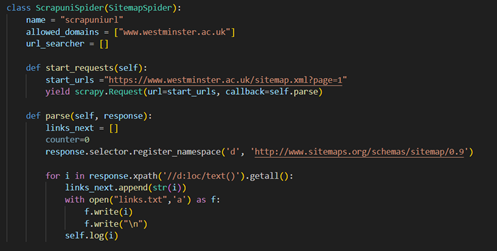 Figure 3: Code for sitemap crawler.
Figure 3: Code for sitemap crawler.
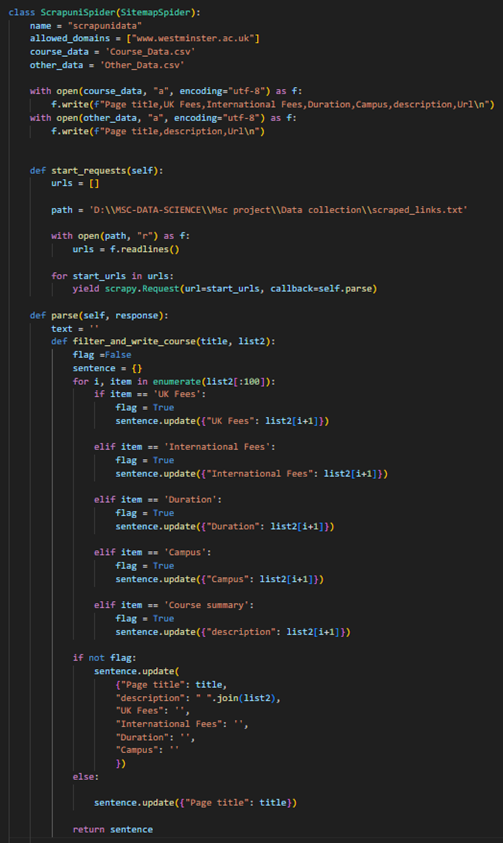 Figure 4: Code for web page data extractor crawler.
Figure 4: Code for web page data extractor crawler.
The extracted data was processed and stored in a structured CSV file (Figure 5), preserving the integrity and usability of the dataset for subsequent steps in the project pipeline. Combining the broad coverage of a sitemap spider with the precision of a data extractor ensured that the data collection process was both exhaustive and accurate. More details on the scripts are available in Appendix 3.
Figure 5: The CSV file with Data extracted from the website.
5.2.2. Data Cleaning
After successfully extracting the raw course-related data from the University of Westminster’s website, the next critical step was data cleaning. This process ensured the dataset was structured, consistent, and ready for analysis and model training. The tools used for data cleaning included Pandas and NumPy, two widely utilized Python libraries for data manipulation and numerical processing. The cleaning workflow was conducted in Python 3.11, using VS Code and Jupyter Notebook for interactive data exploration and debugging. The raw data extracted during the web scraping phase was initially loaded into a Pandas DataFrame for inspection. The first step involved a comprehensive check for missing values across all columns, which revealed no null entries in the raw dataset. Despite missing values, the dataset presented duplicate entries for some courses due to multiple program types (e.g., full-time, part-time, and distance learning). This redundancy stemmed from the page-level data extraction approach, where each program type was represented as a separate entry. A pivot table (Figure 6) was employed to resolve this issue and consolidate all course-related information into a single row. The pivot operation reorganized the data by indexing it on the Page Title (course name) and creating separate columns for each program type, such as UK Fees, International Fees, Campus, Duration, and Course Description. This transformation enabled all relevant details for a course to be represented compactly and comprehensively.
 Figure 6: Implementation of pivot table.
Figure 6: Implementation of pivot table.
The pivot table operation introduced null values where data for certain program types was unavailable. All null values were replaced with blank strings to address this, ensuring uniformity across the dataset. This final step eliminated inconsistencies and created a clean, structured dataset suitable for analysis and fine-tuning (Figure 7). The cleaned dataset was saved as a new CSV file, preserving the updated structure for subsequent project stages.
 Figure 7: Cleaned Dataset
Figure 7: Cleaned Dataset
5.2.3. Exploratory Data Analysis
Exploratory Data Analysis (EDA) is an essential preliminary step in validating and understanding the dataset to ensure it meets the requirements for fine-tuning the generative AI model. Although the primary objective of this project is to develop a chatbot for university course-related queries, ensuring the integrity of the dataset is critical to achieving accurate and contextually relevant responses. EDA is particularly beneficial in identifying potential data quality issues, exploring patterns, and summarizing the dataset’s key attributes (Tukey, 1977). The purpose of conducting EDA in this project is twofold. First, it allows for thoroughly examining the scraped and cleaned dataset to confirm its alignment with the chatbot’s functional requirements. Through visualization techniques such as bar charts and histograms, EDA clarifies the distribution of key attributes such as tuition fees, course duration, and campus offerings. For example, analysing the fee distribution ensures that the data accurately reflects the university’s pricing structure, minimizing the risk of misinforming users (Patil, 2018). Second, EDA facilitates the identification of meaningful trends and insights, which can enhance the chatbot’s capabilities. Understanding patterns in tuition fees or course durations enables the chatbot to address user queries more effectively. Additionally, visual summaries offer a way to present the dataset to stakeholders in a clear and accessible manner. This ensures the data preparation process is transparent and aligned with the project’s goals. While EDA does not directly influence the training process of the generative AI model, its role in validating and understanding the dataset makes it an integral part of the project. The Results section will detail findings from the EDA, including visualizations and statistical insights, to demonstrate the dataset’s reliability and implications for the chatbot’s performance.
5.2.4. Model Selection
5.2.4.1 History of Natural Language Processing (NLP)
The evolution of Natural Language Processing (NLP) has been marked by significant breakthroughs in understanding and generating human language. This progression can be divided into five key stages, each contributing to the capabilities of modern NLP systems.
5.2.4.1.1. Foundational Techniques in NLP
The earliest developments in Natural Language Processing (NLP) relied on foundational linguistic techniques, such as tokenization and lemmatization. These methods were pivotal in enabling machines to process and analyse human language. Tokenization (Figure 8) involves breaking down text into smaller units or tokens, such as words or phrases, providing a structured format for computational processing. On the other hand, lemmatization (Figure 9) reduces words to their base or dictionary form, ensuring uniformity in linguistic analysis. For instance, the words “running,” “ran,” and “runs” would all be reduced to their root form, “run.” These techniques laid the groundwork for text analysis by providing the means to parse, process, and normalize text, facilitating early computational applications like search engines and keyword extraction.
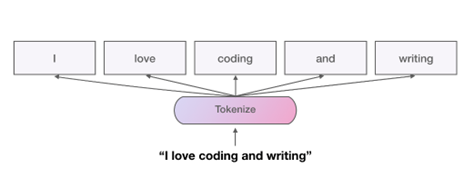 Figure 8: Working of Tokenizer (GitHub, 2024)
Figure 8: Working of Tokenizer (GitHub, 2024)
 Figure 9: working of Lemmatization (GitHub, 2024)
Figure 9: working of Lemmatization (GitHub, 2024)
5.2.4.1.2 Advancements in Statistical Models
As NLP progressed, statistical methods emerged to enhance text representation and analysis. The Bag of Words (BoW) model became one of the earliest and most straightforward approaches to representing text data numerically. BoW represents a document as a vector of word frequencies, disregarding grammar and word order. While adequate for basic tasks, it could not capture contextual relationships between words. TF-IDF (Term Frequency-Inverse Document Frequency), as illustrated in Figure 10, was introduced to address this limitation, assigning weights to words based on their importance within a document and across the dataset. This innovation allowed models to focus on distinctive terms rather than frequently occurring ones. Another significant advancement was the introduction of n-grams, which extended the BoW approach by capturing sequences of adjacent words. For example, bi-grams and tri-grams allowed models to consider word pairs or triplets, offering limited contextual understanding. These statistical models marked a shift from purely linguistic approaches to computational methods, paving the way for machine learning in NLP.
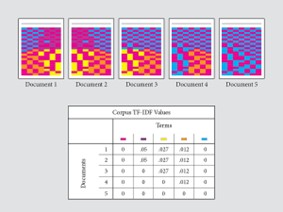 Figure 10: The TD-IDF technique working in NLP (Anupama Garla, 2021).
Figure 10: The TD-IDF technique working in NLP (Anupama Garla, 2021).
5.2.4.1.3. Neural Word Embeddings: Word2Vec
The advent of Word2Vec (Figure 11) in 2013, developed by Mikolov, revolutionized NLP by introducing word embeddings, a dense and distributed representation of words in a continuous vector space. Unlike previous methods, Word2Vec captured semantic relationships between words. For instance, the model could understand that the relationship between “king” and “man” is similar to the relationship between “queen” and “woman.” Skip-Gram and Continuous Bag of Words (CBOW) achieved this using two key architectures. Skip-Gram predicted context words given a target word, while CBOW predicted a target word based on its context. By training on large corpora, Word2Vec allowed models to encode meaningful relationships, such as word analogies and significantly improved downstream tasks like sentiment analysis, clustering, and recommendation systems. This breakthrough marked the transition from statistical representations to neural approaches, enabling richer language understanding.
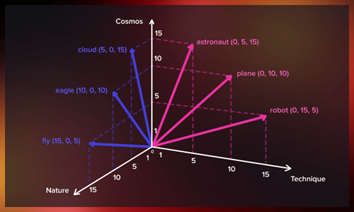 Figure 11: working of word2vec algorithm (Logunova, 2023).
Figure 11: working of word2vec algorithm (Logunova, 2023).
5.2.4.1.4. The Introduction of Deep Learning Models
Deep learning brought a paradigm shift to NLP with the introduction of models such as Recurrent Neural Networks (RNNs), Long Short-Term Memory Networks (LSTMs), and Gated Recurrent Units (GRUs). These architectures were designed to handle sequential data, capturing dependencies over time (Figure 12). RNNs were the first neural models capable of maintaining hidden states, enabling them to model sequential relationships. However, RNNs suffered from the vanishing gradient problem, which hindered their ability to learn long-term dependencies. To address this issue, LSTMs introduced memory cells and gating mechanisms, allowing the selective retention or forgetting of information. This made LSTMs particularly effective for tasks like language modelling and text generation. GRUs, a simplified variant of LSTMs, further reduced computational complexity while maintaining comparable performance. Despite their advancements, these models relied on sequential processing, limiting their scalability and computational efficiency. They laid the foundation for more advanced architecture and developed modern NLP systems.
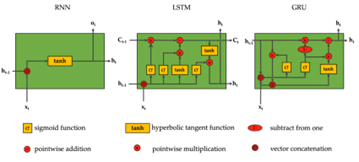 Figure 12: RNN, LSTM and GRU architecture (Idrees, 2024).
Figure 12: RNN, LSTM and GRU architecture (Idrees, 2024).
5.2.4.1.5. Modern Era: Transformers and Large Language Models
The introduction of the Transformer model marked a turning point for NLP. Transformers replaced the sequential nature of earlier models with a parallelized architecture, significantly improving scalability and performance (Vaswani et al., 2017). The core innovation of Transformers lies in their self-attention mechanism, which enables the model to focus on relevant parts of the input sequence while processing each token. This is achieved through the computation of attention scores, which determine the importance of words in relation to one another. Transformers also employ multi-head attention, allowing the model to capture multiple relationships within the data simultaneously. Another key feature is positional embeddings, which preserve the order of tokens in the sequence despite the parallelized processing.
Transformers became the foundation for Large Language Models (LLMs) such as BERT, GPT, and T5. These models scaled up the Transformer architecture, incorporating billions of parameters and training on massive datasets. Modern LLMs leverage contextual embeddings, where word representations vary depending on their context, enabling nuanced understanding and generation of text. For instance, GPT-3, with its 175 billion parameters, demonstrated unprecedented capabilities in generating coherent and contextually accurate text. The evolution of LLMs is illustrated in Figure 13, highlighting the rapid advancements in the field. Today, LLMs are the backbone of applications like chatbots, summarization tools, and automated translation systems, representing the cutting edge of NLP technology.
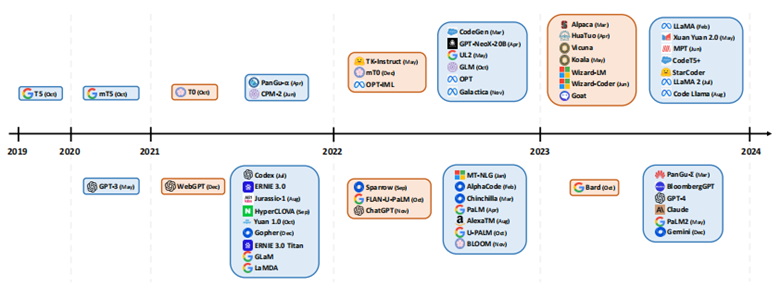 Figure 13: Evolution of Large Language Models.
Figure 13: Evolution of Large Language Models.
5.2.4.2. Architecture of Large Language Models
Large Language Models (LLMs) architecture is deeply rooted in the Transformer model introduced by (Vaswani et al, 2017). This revolutionary framework replaced sequential processing with parallel computation, enabling efficient handling of long text sequences. LLMs extend this foundational architecture to accommodate billions of parameters, allowing for complex understanding and generation of human language. Below is a detailed exploration of the key architectural components that make up LLMs.
5.2.4.2.1. Encoders and Decoders
The Transformer model employs an encoder-decoder architecture to process and generate sequences. The encoder takes input text and converts it into a dense intermediate representation, while the decoder generates output text based on the encoder’s representation and its previous outputs (Figure 14). For tasks like machine translation, both encoders and decoders are critical. However, models like GPT use only the decoder stack for text generation tasks, which autoregressively predicts the next word given the previous context. Conversely, BERT relies exclusively on encoders to understand language, making it ideal for classification and sentence similarity tasks.
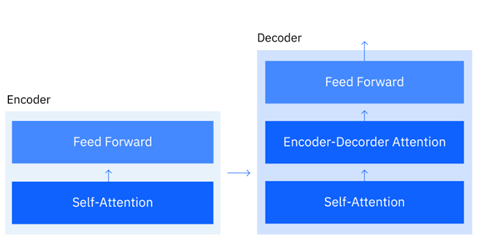 Figure 14: Encoder Decoder Architecture (Ph. D and Noble, 2024).
Figure 14: Encoder Decoder Architecture (Ph. D and Noble, 2024).
5.2.4.2.2. Attention Mechanism
At the heart of the Transformer is the attention mechanism, which allows the model to focus on the most relevant parts of the input sequence for each token being processed. Unlike traditional neural networks, where each input token is processed independently, attention mechanisms calculate relationships between all tokens in the sequence. The key operation in attention is
\[\mathrm{Attention}\left(Q,K,V\right)=\mathrm{softmax}\left(\frac{QK^T}{\sqrt{d_k}}\right)V\]Here:
Q(query),K(key), andV(value) are matrices derived from the input embeddings.d_kis the scaling factor (dimensionality of the keys).The output is a weighted combination of the values determined by the similarity between the query and the keys.
This mechanism enables the model to capture long-range dependencies in the text, such as relationships between words far apart in a sentence.
5.2.4.2.3. Contextual Embedding
Unlike earlier static embeddings such as Word2Vec, modern LLMs utilize contextual embeddings, where the meaning of a word is determined by its surrounding context. For instance, the word “bank” would have different embeddings in the phrases “river bank” and “money bank.” This dynamic understanding is achieved by stacking multiple attention layers and refining the token representations based on their context within the sequence. Contextual embeddings allow LLMs to understand nuanced language constructs, improving performance on summarization, sentiment analysis, and text generation tasks.
5.2.4.2.4. Multi-Head Attention
The Transformer incorporates multi-head attention to enhance the model’s capacity to learn diverse linguistic patterns (Figure 15). This involves projecting the query, key, and value matrices into multiple subspaces, performing attention operations independently for each subspace, and concatenating the results. Formally: \(\mathrm{MultiHead}\left(Q,K,V\right)=\mathrm{Concat}\left({\mathrm{head}}_1,\ldots,{\mathrm{head}}_h\right)W^O\)
Each head $ {\mathrm{head}}_i $ is computed as: ${\mathrm{head}}_i=\mathrm{Attention}\left(QW_i^Q,KW_i^K,VW_i^V\right)$
Here, $W_i^Q,W_i^K,W_i^V,W^O$ are learnable projection matrices. Multi-head attention allows the model to capture various types of relationships in the text simultaneously, such as syntactic dependencies and semantic similarities.
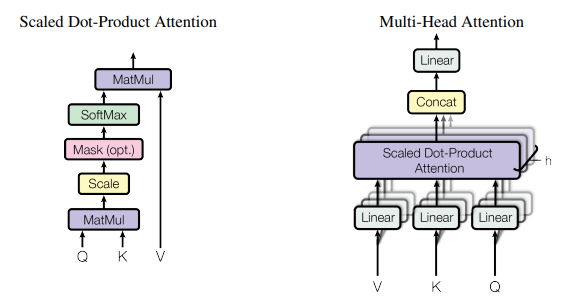 Figure 15: Attention Head architecture (Vaswani et al., 2017).
Figure 15: Attention Head architecture (Vaswani et al., 2017).
5.2.4.2.5. Transformer Architecture and LLMs
The Transformer (Figure 16) combines the above components into a unified framework by stacking multiple encoder and decoder layers. Each layer consists of two key sub-components:
Self-Attention Mechanism: Captures relationships within the input sequence.
Feed-forward Neural Networks: Applies non-linear transformations to refine token representations.
These layers are interleaved with residual connections and layer normalization, ensuring stable gradients during training. Modern LLMs build upon this architecture by scaling up the number of layers, embedding dimensions, and attention heads. For example:
GPT-3: Utilizes 96 decoder layers, 12 attention heads, and 175 billion parameters.
BERT: Features 12 encoder layers with 12 attention heads optimized for understanding tasks.
LLMs like GPT-3, BERT, and Llama are trained on diverse and massive datasets, leveraging techniques like masked language modelling and autoregressive text generation. These models have transformed NLP by enabling tasks such as conversational AI, text summarization, and language translation with unprecedented accuracy and fluency.
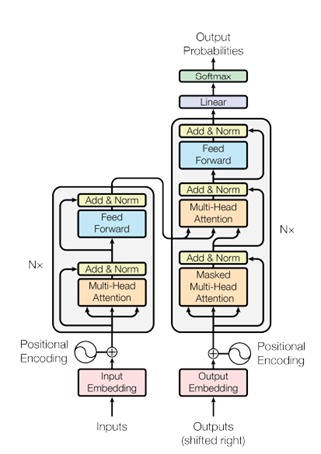
Figure 16: The Transformer - model architecture (Vaswani et al., 2017).
5.2.4.3. Model Selection for Text Generation
To fulfil the requirements of this project, Natural Language Processing (NLP) Large Language Models (LLMs) were utilized. In NLP, LLMs are designed for various tasks, such as text classification, question answering, translation, summarization, text generation, fill-mask, and sentence similarity. For this project, the primary focus was text generation, which aligns directly with developing a chatbot capable of generating accurate and contextually relevant responses to user queries. Text generation models are fine-tuned to predict the next word or token based on a given context, enabling them to produce coherent and meaningful responses. Several models were evaluated, and the following were chosen based on their compatibility, computational efficiency, and performance (Figure 17):
Phi-3.5-mini-instruct (Microsoft): A lightweight model optimized for instruction-based tasks, selected for its efficiency and ability to operate in resource-constrained environments.
Mistral-7B-v0.3 (MistralAI): Known for its balance between computational efficiency and performance, this model offers robust text generation capabilities.
Gemma-2-9B (Google): A benchmark model with 9 billion parameters, chosen for its high-quality text generation and contextual understanding.
-Llama-3.2-4B (Meta): A compact yet powerful open-source model with a strong performance in text generation tasks, selected for its computational feasibility and precision.
These models were carefully chosen to provide diverse capabilities, balancing computational efficiency and performance. Figure 16 presents a screenshot of the Open LLM Leaderboard from Hugging Face, showcasing the performance rankings of these models across various tasks.
 Figure 17: The Open LLM Leaderboard from Hugging Face.
Figure 17: The Open LLM Leaderboard from Hugging Face.
5.2.4.3.1. Phi-3.5-mini-instruct
Developed by Microsoft, Phi-3.5-mini-instruct is a compact LLM with 3.5 billion parameters. This model is designed for instruction-based tasks and excels in environments with limited computational resources. It employs efficient attention mechanisms to process inputs, making it suitable for lightweight chatbot applications. Key Features:
Optimized for generating concise and contextually relevant responses.
Trained on diverse datasets to enhance generalizability.
High performance on instruction-following tasks with minimal computational overhead.
This model was selected for its ability to adapt to fine-tuning tasks with resource constraints
5.2.4.3.2. Mistral-7B-v0.3
Mistral-7B-v0.3, developed by MistralAI, is a mid-sized LLM with 7 billion parameters, balancing computational efficiency and task performance. The model leverages advanced optimizations like gradient checkpointing and low-rank adaptation, enabling fine-tuning on constrained hardware. Key Features:
Strong performance in text generation tasks, particularly for domain-specific fine-tuning.
Efficient memory utilization through mixed-precision training techniques.
Versatility across various NLP tasks, including chatbot development.
The inclusion of Mistral-7B ensures robust performance without excessive computational demands.
5.2.4.3.3. Gemma-2-9B
Gemma-2-9B, a benchmark model developed by Google, features 9 billion parameters, making it one of the most capable models for text generation tasks. This model is known for its ability to handle complex and context-sensitive queries, producing outputs with high fluency and coherence. Key Features:
Incorporates advanced attention mechanisms, enabling a nuanced understanding of context.
Designed for tasks requiring detailed and contextually rich outputs.
Offers state-of-the-art performance in text generation while maintaining scalability.
Despite its larger size, Gemma-2-9B was chosen for its superior quality in generating detailed responses, aligning with the chatbot’s requirements.
5.2.4.3.4. Llama-3.2-4B
Llama-3.2-4B, developed by Meta, is a lightweight yet high-performing LLM with 4 billion parameters. This model combines computational efficiency with robust text generation capabilities, making it ideal for real-world applications where resources may be limited. Key Features:
Compact architecture with high accuracy and contextual understanding.
Well-suited for generating concise and accurate chatbot responses.
Leverages efficient fine-tuning methodologies, reducing computational costs.
The Llama-3.2-4B model was selected for its compatibility with the project’s computational constraints and strong text generation task performance.
5.2.5. Dataset Formatting
Dataset formatting is crucial in preparing the training data for fine-tuning Large Language Models (LLMs). Different LLMs require specific input formats to identify the relationship between the user’s input and the model’s expected output. When a model is pre-trained, it is exposed to a defined structure that helps it interpret the input it receives and the response it generates. Adapting the dataset to the required format for fine-tuning is essential to ensure the model can effectively learn the relationships necessary for generating accurate outputs. This project utilised three distinct prompt formats, each tailored to the specific requirements of the models chosen for fine-tuning. These formats ensure compatibility with the pre-trained models and enhance their ability to generate contextually relevant and precise responses. The formats used are Alpaca Template, ChatML Format, and Jinja Template.
5.2.5.1. Alpaca Template
The Alpaca Template (Figure 18) is one of the most widely used prompt formats in the LLM fine-tuning community. It is designed to provide clear instructions to the model, helping it understand the task and context effectively. This format includes an instruction, an input, and a response. It is particularly suitable for models like Gemma-2-9B and Mistral-7B, trained to follow specific instructions in a structured format. The original dataset was converted into the Alpaca format, as shown in Figure 19, to align with the requirements of these models. The Alpaca prompt is structured as follows:
 Figure 18: Alpaca prompt templates (Unsloth - Open source Fine-tuning for LLMs, 2024)
Figure 18: Alpaca prompt templates (Unsloth - Open source Fine-tuning for LLMs, 2024)
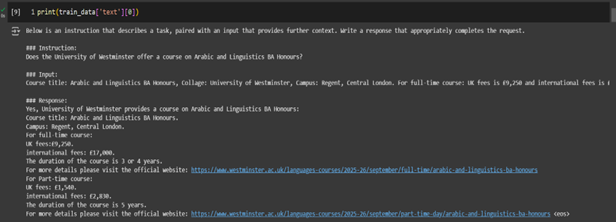 Figure 19: Formatted dataset for Gemma2 and Mistral model.
Figure 19: Formatted dataset for Gemma2 and Mistral model.
5.2.5.2. ChatML Format
The ChatML Format (Figure 20) is an advanced and versatile structure that simulates natural conversations. Its key advantage is distinguishing between multiple roles in a dialogue, such as the system, user, and assistant. This format is particularly effective for building chatbots and conversational agents because it mimics real-world interactions, preserving the logical flow of a conversation. It was selected for fine-tuning Llama-3.2-3B and Phi-3.5-mini-instruct, optimized for chat-based applications requiring context-aware and coherent responses. The ChatML format provides a hierarchical structure to define different conversation roles. The system segment offers initial instructions or context to guide the model’s behaviour throughout the conversation. For example, the system could specify that the model should provide concise, formal, and accurate answers. The user segment contains the input query or prompt provided by the user. The assistant segment includes the model’s generated response to the user query. The structured format ensures that the model understands the flow and context of a multi-turn dialogue, which is critical for delivering meaningful and contextually relevant responses. An example of the ChatML format is shown in Figure 21
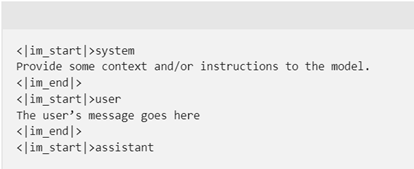 Figure 20: ChatML prompt template (mrbullwinkle, 2024).
Figure 20: ChatML prompt template (mrbullwinkle, 2024).
 Figure 21: Formatted dataset for Llama-3.2 and Phi-3.5 model.
Figure 21: Formatted dataset for Llama-3.2 and Phi-3.5 model.
5.2.5.3. Jinja Format
The Jinja Template (Figure 22 ) is a powerful and flexible format for generating dynamic text content. Originally designed as a templating language for web frameworks like Flask and Django, Jinja has proven an effective structure for creating structured prompts for LLMs, particularly when used on platforms like Ollama (Figure 23), which supports this format natively. The Jinja Template was selected for this project to fine-tune the model deployed on Ollama for local and cost-effective usage. Jinja templates are highly adaptable and well-suited for scenarios where dynamic content generation is required. For example, in this project, the chatbot must answer user queries about university programs by pulling specific fields like tuition fees, course duration, and campus location. Jinja templates enable this by embedding placeholders for these variables, making it possible to generate customized responses based on user input. The basic structure of a Jinja template includes Inheritance: Templates can inherit from base structures to maintain consistency across reactions. Blocks: Block directives can dynamically replace or extend Specific sections of content. Variables: Variables are enclosed in and can be dynamically replaced during runtime. Control Flow: Conditional logic and loops can be incorporated for more complex formatting.
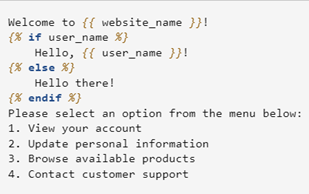 Figure 22: An example of Jinja Prompt
Figure 22: An example of Jinja Prompt
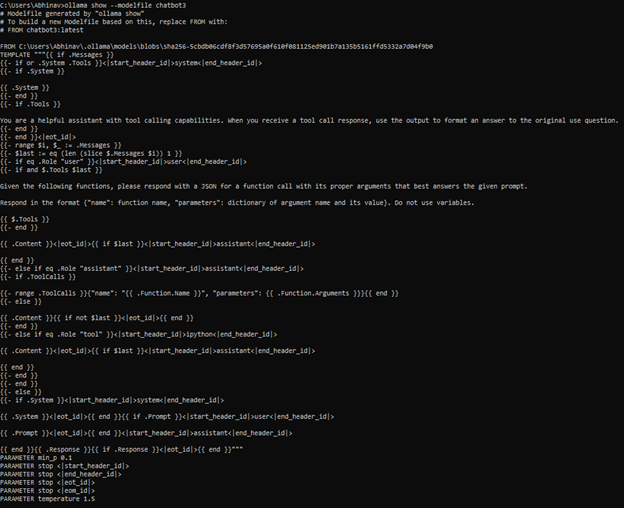 Figure 23: Actual Jinja Prompt used in Ollama.
Figure 23: Actual Jinja Prompt used in Ollama.
5.2.6. Model Training
Model training/fine-tuning is pivotal in customizing Large Language Models (LLMs) to generate accurate, domain-specific responses. This project involved fine-tuning four selected models Gemma-2-9B, Mistral-7B, Llama-3.2-3B, and Phi-3.5-mini-instruct using resource-efficient methodologies to align their capabilities with the requirements of the chatbot.
5.2.6.1. LoRA Adapters: Efficient Parameter Fine-Tuning
A key innovation in this project was using Low-Rank Adaptation (LoRA) adapters, widely regarded as an efficient mechanism for fine-tuning large language models (Hu et al., 2021). LoRA bypasses the need to fine-tune all model parameters by introducing lightweight, task-specific layers. These layers are injected into specific parts of the model, drastically reducing the computational cost and memory requirements while maintaining high performance. LoRA Components:
Rank (
r): Determines the size of the low-rank matrices added to the model.Projection Modules: LoRA adapters are applied to specific projection layers of the Transformer, including:
q_proj,k_proj,v_proj: Represent the query, key, and value projections in the attention mechanism.o_proj: Handles the output projection of the attention layers.gate_proj: Controls gating mechanisms in specific model layers.up_projanddown_proj: Perform upscaling and downscaling of low-rank matrices.LoRA Alpha: A scaling factor used to adjust the impact of LoRA layers on the original model’s parameters.
LoRA adapters were particularly significant for this project, enabling models like Gemma-2-9B and Mistral-7B to be fine-tuned on limited hardware while achieving task-specific performance improvements. Table 1 provides a detailed configuration of LoRA parameters for each model, illustrating how these adapters optimized the training process for different architectures. The use of LoRA aligns with recent advancements in parameter-efficient fine-tuning, which have demonstrated substantial reductions in computational overhead while preserving the pre-trained knowledge of large models (He et al., 2022).
| LoRA Configuration of Models |
|---|
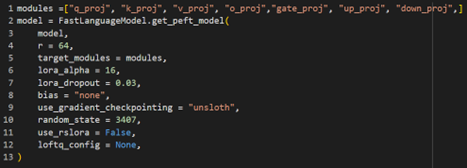 Model: gemma-2-9b Model: gemma-2-9b |
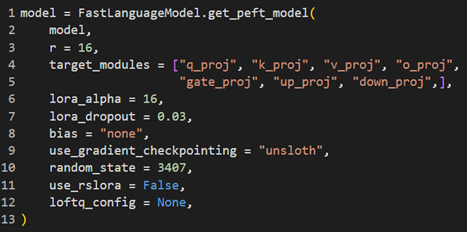 Model: mistral-7b Model: mistral-7b |
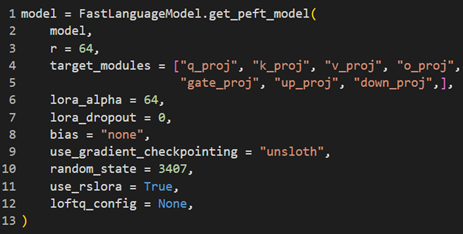 Model: Llama-3.2-3b Model: Llama-3.2-3b |
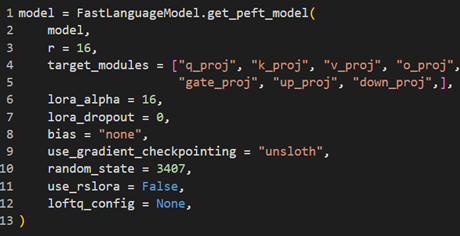 Model: Phi-3.5-mini-instruct Model: Phi-3.5-mini-instruct |
Table 1: Illustrating LoRA configuration used for all 4 selected models.
5.2.6.2. Downloading Pre-Trained Models to Local Runtime
The selected models, hosted on the Hugging Face Hub, were downloaded to the local runtime of Google Collab for fine-tuning. This approach minimized latency and ensured seamless model access during the training process. Each model’s size, download time, and hardware requirements are presented in Table 2, providing insights into the resource implications of fine-tuning different LLMs.
| Models download statistics |
|---|
 Model: Gemma-2-9b Model: Gemma-2-9b |
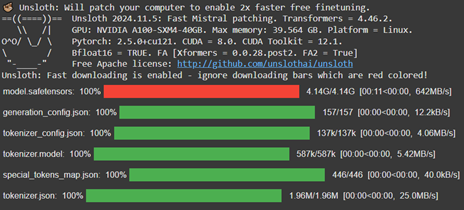 Model: Mistral-7b Model: Mistral-7b |
 Model: Llama-3.2-3b Model: Llama-3.2-3b |
 Model: Phi-3.5-mini-instruct Model: Phi-3.5-mini-instruct |
Table 2: Represents the Downloading Statistics of Different models from the HuggingFace hub for finetuning.
5.2.6.3. Implementation of Early Stopping
Early stopping was implemented during the training process to ensure robust model performance and prevent overfitting or underfitting. Early stopping monitors the validation loss at regular intervals and halts training when the loss no longer improves over a predefined number of steps (Goodfellow et al., 2016). This technique not only enhances model generalization but also minimizes unnecessary computational time. The implementation of early stopping for this project is depicted in Figure 24, which demonstrates the callback function integrated into the training pipeline. By dynamically adjusting the training duration, this approach ensured that the fine-tuning process yielded models optimized for accuracy and efficiency.
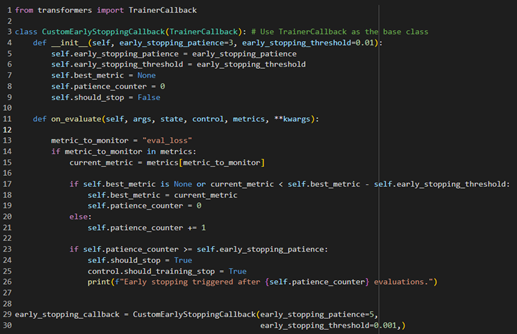 Figure 24: Implementation of early stopping callback
Figure 24: Implementation of early stopping callback
5.2.6.4. Training Parameters and Configuration
The fine-tuning process was managed using Hugging Face’s Trainer API with a custom configuration of training parameters. These parameters were carefully selected to balance computational efficiency with model performance:
Batch Size: A per_device_train_batch_size of
2was chosen to optimize memory usage during training.Gradient Accumulation: Steps set to
4allowed larger effective batch sizes without exceeding hardware memory limits.Warmup Steps: Gradual learning rate increases over 5 steps ensured model stability during the initial phase of training.
Learning Rate: A learning rate of
2e-4was used to facilitate stable convergence, aligning with recommended practices for large-scale models (Brown et al., 2020).Mixed Precision Training:
FP16andBF16precision modes were toggled based on GPU support to reduce memory usage and accelerate computation.Evaluation Strategy: Validation was performed every 3 steps (
eval_steps=3), with the best-performing model checkpoint loaded at the end of training.Optimization Algorithm: The AdamW optimizer with 8-bit precision (
adamw_8bit) was employed for efficient weight updates and memory savings.
The training script, as shown in Figure 25, demonstrates the integration of these parameters within a customized pipeline.
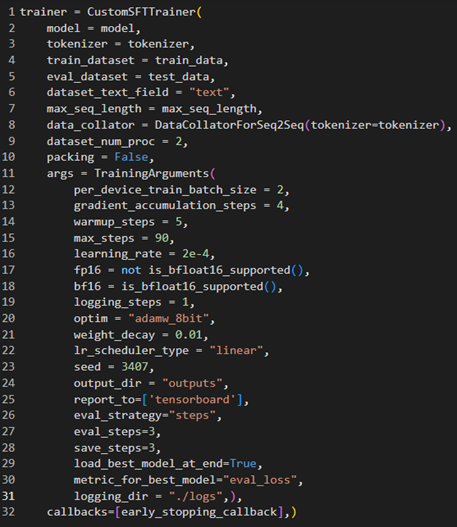 Figure 25: Implementation of Training parameters
Figure 25: Implementation of Training parameters
5.2.6.5. Resource Optimization Using Unsloth and Google Collab
The Unsloth library addressed the computational challenges of fine-tuning large-scale models. Unsloth optimizes GPU utilization by reducing memory overhead through parameter-efficient techniques, making it a suitable choice for fine-tuning in constrained hardware environments (Hu et al., 2021). The training was conducted on Google Collab, leveraging its provision of high-performance GPUs, such as the NVIDIA A100, which supports mixed-precision training for faster and more efficient computation. The efficiency of GPU memory usage during the training of all four models is summarized in Table 3, demonstrating significant reductions in resource consumption through Unsloth. This optimization was critical for fine-tuning models with billions of parameters while operating within the constraints of cloud-based hardware.
| GPU Memory usages |
|---|
 Model: Gemma-2-9B Model: Gemma-2-9B |
 Model: Mistral-7B Model: Mistral-7B |
 Model: Llama-3.2-3B Model: Llama-3.2-3B |
 Model: Phi-3.5-Mini-Instruct Model: Phi-3.5-Mini-Instruct |
Table 3: Memory optimization using Unsloth, Google Collab and Nvidia A100 GPU.
5.2.6.6. Saving and Deployment of Fine-Tuned Models
After completing the training process, the fine-tuned models were saved with 16-bit precision to reduce storage requirements without compromising inference performance. These models were uploaded to the Hugging Face Hub, making them accessible for further evaluation and deployment (Figure 26). Reduced precision aligns with best practices for deploying LLMs in resource-constrained environments (Rajbhandari et al., 2020).
 Figure 26: All the finetuned Models uploaded to HuggingFace Hub.
Figure 26: All the finetuned Models uploaded to HuggingFace Hub.
5.2.7. Model Evaluation
Evaluating the performance of Large Language Models (LLMs) poses unique challenges, as traditional evaluation metrics often fail to capture the nuanced capabilities of these models. Unlike standard machine learning models, which can be assessed using metrics such as accuracy or precision, LLMs require evaluation methods tailored to their specific type and task. This project chose several task-appropriate metrics to evaluate comprehensively the fine-tuned models’ effectiveness in generating accurate, contextually relevant, and coherent responses.
5.2.7.1. Limitations of Traditional Metrics
Traditional evaluation metrics, such as accuracy or F1-score, are insufficient for LLM evaluation due to the generative nature of these models. Generative models, particularly those tasked with natural language responses, do not produce binary outcomes or fixed labels. Instead, they generate open-ended outputs that require evaluation based on multiple dimensions, including fluency, relevance, coherence, and factual accuracy (Celikyilmaz et al., 2020). Therefore, specialized metrics are required to capture the complexity of LLM-generated text.
5.2.7.2. Selected Metrics for Model Evaluation
Based on the type and task of the LLMs in this project, the following evaluation metrics were employed:
5.2.7.2.1. BLEU (Bilingual Evaluation Understudy)
The BLEU metric evaluates the similarity between the model’s generated response and a set of reference responses. BLEU scores are calculated based on the overlap of n-grams (sequences of words) between the generated and reference texts, with higher scores indicating closer alignment. Formula: \(\mathrm{BLEU}=BP\cdot\exp{\left(\sum_{n=1}^{N}w_n\log{p_n}\right)}\)
Where BP is the brevity penalty, w n are weights, and pn represents the precision of n-grams.
BLEU is widely used for tasks like translation but has been adapted here to assess the relevance of generated responses.
5.2.7.2.2. METEOR (Metric for Evaluation of Translation with Explicit Ordering)
METEOR improves upon BLEU by incorporating semantic equivalence through synonyms and stemming, making it more suitable for conversational tasks. It evaluates the harmonic mean of precision and recall, assigning higher weights to semantically aligned phrases (Banerjee and Lavie, 2005). This metric provides insight into the semantic accuracy of the chatbot’s responses.
5.2.7.2.3. ROUGE (Recall-Oriented Understudy for Gisting Evaluation)
ROUGE measures the n-grams, sequences, or word pairs overlap between generated and reference texts, focusing on recall. ROUGE is particularly useful for evaluating tasks such as summarization but was adapted here to assess the chatbot’s completeness in generating responses.
5.2.7.2.4. CER (Character Error Rate)
CER quantifies the number of character-level edits (insertions, deletions, substitutions) required to transform the generated text into the reference text. A lower CER indicates greater precision and fewer errors. This metric is useful for evaluating the linguistic accuracy of responses.
5.2.7.2.5. ScaR-BLEU (Scale-Reduced BLEU)
ScaR-BLEU modifies traditional BLEU by scaling the weights of higher-order n-grams, emphasising longer, contextually coherent sequences. This metric evaluates how well the chatbot generates responses that extend beyond simple word overlaps, focusing on contextual fluency and coherence.
5.2.7.3. Evaluation Process
The evaluation process involved comparing the generated responses from the fine-tuned LLMs against a curated set of reference responses derived from the training data. The comparison was performed across multiple prompts, covering various queries related to university courses, fees, and program details. Each response was evaluated using the selected metrics, and scores were aggregated to provide a holistic view of the model’s performance.
5.2.7.4. Importance of Task-Specific Metrics
The use of task-specific metrics such as BLEU, METEOR, and ScaR-BLEU aligns with the requirements of chatbot applications, ensuring that the evaluation focuses on response quality rather than rigid correctness. For example:
BLEU and METEOR capture linguistic alignment and semantic relevance, ensuring contextually accurate responses.
CER identifies minor errors that may impact the readability or understanding of generated responses.
ScaR-BLEU assesses the coherence of longer responses, critical for conversational agents handling complex queries.
5.2.8. RAG-Tuning
Retrieval-augmented generation (RAG) is an advanced technique that combines the retrieval of external knowledge with the generative capabilities of language models. It addresses the limitations of pre-trained models by enabling real-time query-specific data retrieval and incorporation into the generation process. This dual mechanism allows models to dynamically respond to user queries with accurate, up-to-date, and contextually relevant information (Lewis et al., 2020). For this project, RAG-Tuning is critical in ensuring the chatbot can deliver precise responses about university courses, including tuition fees, program durations, and campus details.
5.2.8.1. How RAG-Tuning Works
RAG-Tuning integrates two primary components, retrieval and generation, creating a seamless workflow to enhance response accuracy. The process involves the following steps:
Query Embedding: A pre-trained embedding model transforms The user’s query into a dense vector representation. These embeddings capture the semantic meaning of the query in high-dimensional space, enabling effective comparison with stored data.
Document Retrieval: The query embedding is matched against document embeddings stored in a vector database. This retrieval uses metrics such as cosine similarity to identify the most relevant documents.
Context Incorporation: The retrieved documents are provided as context to the generative model, augmenting its pre-trained knowledge with real-time information.
Response Generation: The generative model uses the augmented context to generate a coherent, contextually aware response tailored to the user’s query.
This process ensures the chatbot can dynamically access and utilize external knowledge, bridging the gap between static pre-trained information and dynamic, query-specific responses. Figure 27 illustrates the workflow of RAG-Tuning, as implemented in this project using the LangChain library.
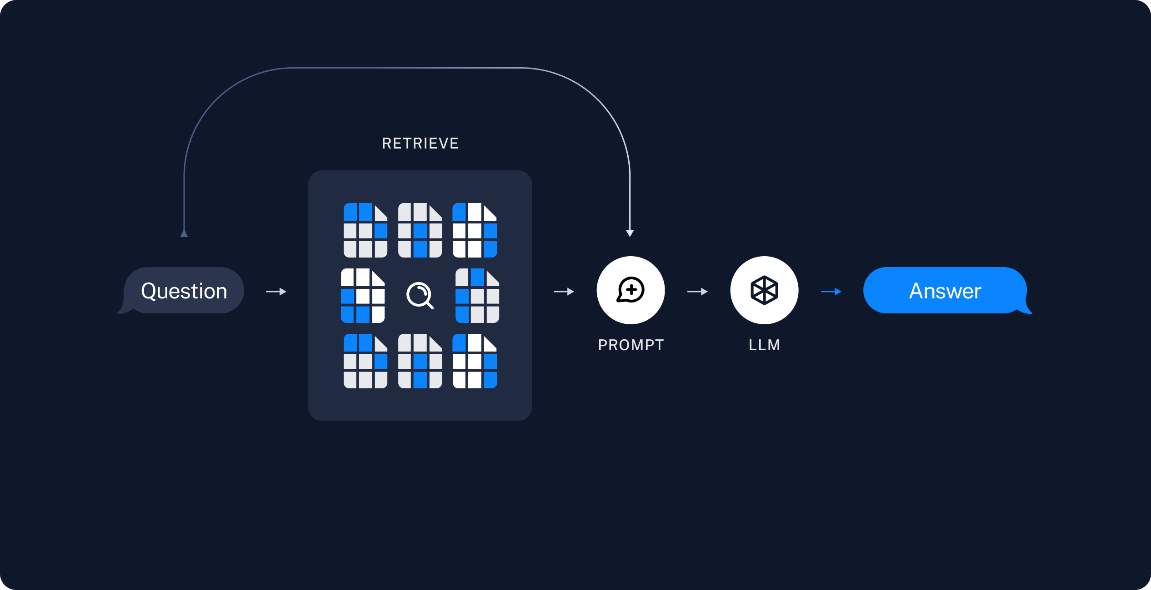 Figure 27: Working RAG-Tuning (Langchain, 2024).
Figure 27: Working RAG-Tuning (Langchain, 2024).
5.2.8.2. Vector Embedding and Cosine Similarity
Central to RAG-Tuning is the text representation as dense vector embeddings, which encode the semantic meaning of queries and documents. These embeddings are crucial for efficient document retrieval, allowing for quick and precise identification of relevant information. Cosine similarity is used to measure the similarity between two vectors in high-dimensional space to compare embeddings. The formula for cosine similarity is:
\[\mathrm{Cosine\ Similarity} = \frac{\mathbf{A} \cdot \mathbf{B}}{|\mathbf{A}| |\mathbf{B}|}\]Where:
$ \mathrm{A}$ and $ \mathrm{B}$ are vector embeddings representing the query and document, respectively.
$ \mathrm{A} $ and $ \mathrm{B} $ are the magnitudes (Euclidean norms) of the vectors. - $ \mathrm{A}\cdot\mathrm{B} $ represents the dot product of the two vectors.
Cosine similarity values range from -1 to 1. 1: Perfect alignment, indicating high similarity. 0: Orthogonality, suggesting no similarity. -1: Opposite directions, denoting dissimilarity (Figure 28).
 Figure 28: Working of Cosine Similarity (Langchain, 2024).
Figure 28: Working of Cosine Similarity (Langchain, 2024).
5.2.8.3. LangChain Library and Its Role in RAG Applications
The LangChain library is an open-source framework that simplifies the development of RAG-based applications. It provides various tools for integrating retrieval and generation components, making it an ideal choice for this project. LangChain’s modular design allows seamless interaction between vector databases, embedding and language models.
LangChain is a versatile framework that simplifies the development of Retrieval-Augmented Generation (RAG) applications by offering several advanced features. It supports diverse data formats, such as PDFs, CSVs, and JSON files, through its document loaders, making it flexible for data preparation. Its integration with vector databases like ChromaDB, FAISS, and Pinecone facilitates efficient storage and retrieval of document embeddings. LangChain also provides pre-configured and customizable chain-building tools to streamline the workflow between retrieval and generation. Additionally, the library supports state-of-the-art embedding models, ensuring high-quality vector representations of text, and offers tools for prompt engineering, enabling optimized interaction between retrieved documents and the generative model. In this project, LangChain was utilized to store university course data, including tuition fees, program durations, and campus details, in ChromaDB, a high-performance vector database. It was also used to generate dense vector embeddings for queries and documents and construct retrieval pipelines that seamlessly integrated retrieval and generation. LangChain’s flexibility and modularity allowed the chatbot to dynamically retrieve and incorporate course-specific knowledge, significantly enhancing its ability to provide accurate and contextually relevant responses. This integration of LangChain with RAG-Tuning effectively enabled the chatbot to address user queries dynamically and enriched. Refer to Appendix 3 for more details on the code and scripts used in this section.
Chapter 6: Results
This section presents a comprehensive analysis of the results obtained during the different stages of the project. The study covers the outcomes of exploratory data analysis, training and validation performance of the LLMs, model evaluation, and the performance of Retrieval-Augmented Generation (RAG) applied to the best-performing model. Refer to Appendix 3 for Scripts used for generating Screenshots.
6.1. Exploratory Data Analysis Results
Exploratory Data Analysis (EDA) was conducted to uncover patterns, trends, and outliers within the dataset, ensuring a robust foundation for training the chatbot. The results of the EDA are presented in the form of various visualizations, critically analysed below.
6.1.1. UK Fees Distribution Across Study Modes
The distribution of UK fees across study modes (Figure 29) reveals an intense concentration at £9,250, consistent with the standard tuition fees for many undergraduate programs in the UK. However, there are notable variations, with specific fees ranging as low as £600 and as high as £16,700. This range includes specialized or short-term courses, professional certifications, and traditional degree programs. The presence of outliers, particularly in higher fee ranges, highlights the need for the chatbot to differentiate between program types when providing information to users. Failure to address these differences could result in misleading responses.
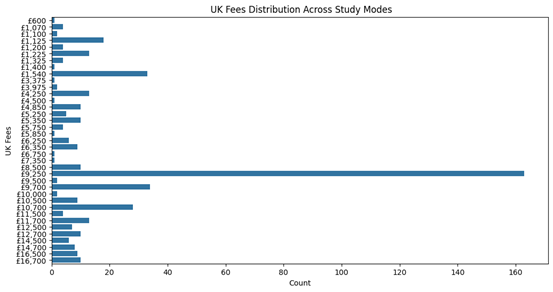 Figure 29: UK Fee Distribution Across Study Models
Figure 29: UK Fee Distribution Across Study Models
6.1.2. International Fee Distribution Across Study Modes
The distribution of international fees (Figure 30) reveals a significant clustering of tuition fees at £17,000, representing the standard fee for many postgraduate and undergraduate courses aimed at international students. However, fees ranging from as low as £600 to as high as £22,500 highlight the diversity of programs included in the dataset, encompassing both short-term certificate courses and specialised degree programs. The observed outliers at higher fee levels suggest including premium or niche courses, which may cater to specific disciplines or offer unique benefits. This fee variability underscores the importance of clear communication within the chatbot’s responses to avoid misinterpretations. The wide range of international fees also suggests a potential need for segmenting fee structures within the chatbot, particularly for courses with additional costs or unique fee structures.
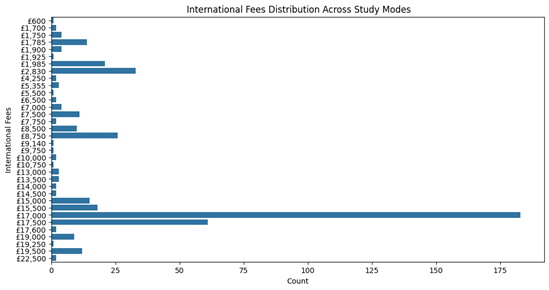 Figure 30: International fee distribution across study modes.
Figure 30: International fee distribution across study modes.
6.1.3. Duration Distribution Across Study Modes
The duration distribution (Figure 31) shows a predominant clustering of programs with one-year and two-year durations, reflecting the structure of many postgraduate and undergraduate programs, respectively. Other durations, such as three to four years and extended options of up to six years, indicate flexible study modes like part-time or block-release formats. The chatbot must account for this variability to ensure accurate answers to user queries regarding study duration. Including distinct categories such as “3 or 4 years” may introduce ambiguity, which should be resolved during data preprocessing or by explicitly defining the category in the chatbot’s responses.
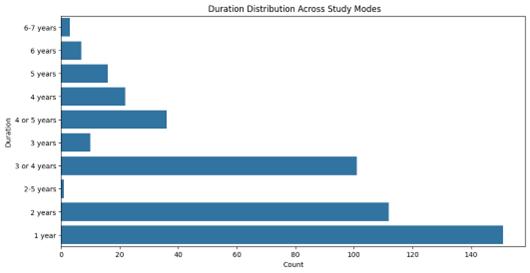 Figure 31: Duration of course across study modes.
Figure 31: Duration of course across study modes.
6.1.4. Campus Distribution Across Study Modes
The campus distribution (Figure 32) highlights a significant concentration of courses offered at the Regent’s Campus in Central London, followed by Marylebone and other campuses. This centralised offering of programs at specific campuses necessitates that the chatbot provides accurate location-specific details to users. Additionally, campuses like Harrow and Cavendish offer more specialised courses, and this granularity of detail should be embedded in the chatbot’s knowledge base to enhance the user experience.
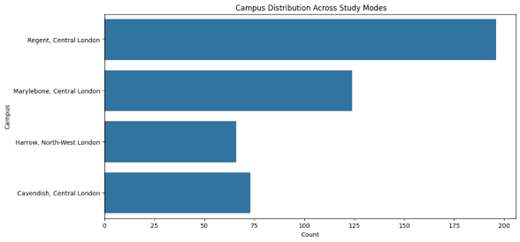 Figure 32: Campus distribution across study modes.
Figure 32: Campus distribution across study modes.
6.1.5. Analysis of Summary Statistics
The DataFrame summary (Figures 33,34, and 35) provides additional insights into the dataset’s structure. For instance, all fields in the dataset are non-null, ensuring that missing data is not a concern for this project. Furthermore, the “Page Title” field contains 275 unique values, indicating a one-to-one mapping between course titles and their corresponding details. The variability in the number of unique values across columns, such as “Duration” and “Fees,” reflects the diversity in course types and offerings. This diversity underscores the importance of effectively structuring queries and responses to user-specific requirements.
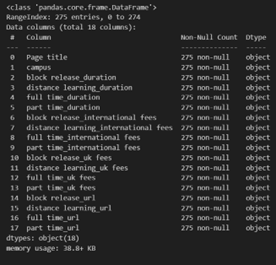 Figure 33: Dataset features information.
Figure 33: Dataset features information.
 Figure 34: Dataset basic statistics (Part 1/2).
Figure 34: Dataset basic statistics (Part 1/2).
 Figure 35: Dataset basic statistics (Part 2/2).
Figure 35: Dataset basic statistics (Part 2/2).
6.1.6. Summary of exploratory data analysis
The exploratory data analysis (EDA) highlights the dataset’s high level of completeness, which supports reliable model training. However, outliers in fee structures and ambiguous categories for program durations could impact the chatbot’s accuracy, necessitating careful prompt engineering to mitigate these issues. Additionally, the diversity in campus offerings and program types emphasises the need for the chatbot to provide contextually rich and specific responses, particularly given the flexibility in program durations, fees, and study modes. This granularity ensures tailored interactions to avoid confusion among users. Furthermore, the dataset’s variability across features presents an opportunity for scalability, enabling the chatbot to address a broad spectrum of user queries. Handling edge cases, such as outliers or rare program configurations, requires enhanced model adaptability. These insights from the EDA have guided subsequent phases of data preprocessing, model training, and evaluation, ensuring a robust alignment between the dataset and project objectives.
6.2. LLM Training Results
The training of Large Language Models (LLMs) was evaluated based on the behaviour of training loss and validation loss across multiple epochs, which serve as key indicators of model convergence and generalisation. As visualised in the provided graphs, loss values represent the model’s error rate during training. An ideal model demonstrates a gradual decrease in training and validation loss, with minimal divergence between the two, indicating successful generalisation to unseen data (Goodfellow et al., 2016). However, substantial divergence or early stabilisation of validation loss can indicate overfitting or underfitting, both of which were mitigated in this study using early stopping techniques.
6.2.1. Mistral-7B
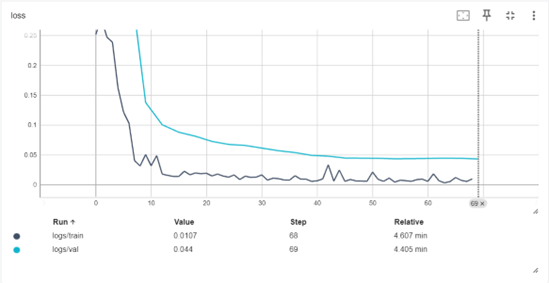 Figure 36: Training and validation loss for Mistral-7B model.
Figure 36: Training and validation loss for Mistral-7B model.
As shown in Figure 36, the Mistral-7B model shows a steep initial decline in training loss, which quickly converges within the first ten steps. While higher initially, validation loss gradually stabilises but remains slightly above the training loss, indicating generalisation with minor overfitting. This performance highlights the model’s ability to adapt effectively to the dataset, especially given its relatively smaller size than larger models.
6.2.2. Gemma-2-9B
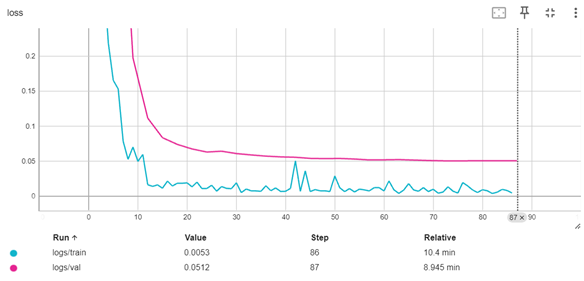 Figure 37: Training and validation loss for Gemma-2-9B model.
Figure 37: Training and validation loss for Gemma-2-9B model.
As shown in Figure 37, the Gemma-2-9B model exhibits a smooth and consistent convergence for training and validation loss. The steady reduction and minimal divergence reflect the model’s robust generalisation capabilities. Gemma-2-9B required additional training steps to stabilise due to its larger size and higher computational requirements. This behaviour aligns with the findings of Google’s benchmark studies (Lewis et al., 2023), emphasising the need for longer fine-tuning cycles for larger models.
6.2.3. Llama-3.2-3B
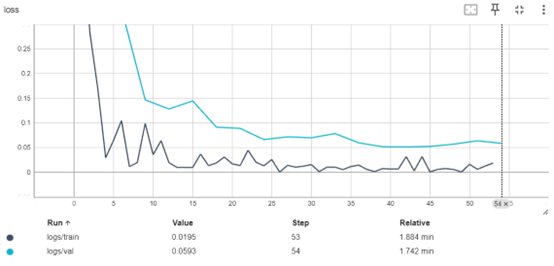 Figure 38: Training and validation loss for Llama-3.2-3B model.
Figure 38: Training and validation loss for Llama-3.2-3B model.
As shown in Figure 38, the training curve for Llama-3.2-3B demonstrates rapid convergence, with training and validation loss stabilising quickly. However, minor fluctuations in validation loss suggest sensitivity to smaller data variations. Despite this, the minimal gap between losses confirms effective generalisation. The model’s lightweight architecture enabled faster training, making it suitable for resource-constrained environments.
6.2.4. Phi-3.5-Mini-Instruct
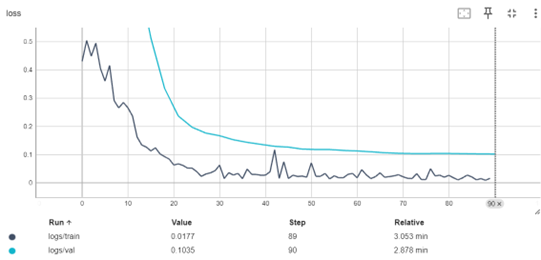 Figure 39: Training and validation loss for Phi-3.5-Mini-Instruct model.
Figure 39: Training and validation loss for Phi-3.5-Mini-Instruct model.
As shown in Figure 39, the Phi-3.5-Mini-Instruct model shows a clear distinction between training and validation loss. While training loss declines rapidly, validation loss stabilises at a higher value, indicating slight overfitting. This trend highlights the trade-offs associated with smaller models, which converge quickly but may require additional regularisation techniques to improve generalisation.
6.2.5. Summary
The loss curves for all models provide critical insights into their training behaviour. More extensive models like Gemma-2-9B exhibited smoother convergence but required additional steps, while smaller models such as Phi-3.5-Mini-Instruct achieved quicker training but displayed mild overfitting. The Llama-3.2-3B and Mistral-7B models balanced training efficiency with generalisation, making them ideal candidates for deployment. These results demonstrate that model architecture and size significantly influence training behaviour, underscoring the importance of selecting appropriate configurations based on the project’s resource constraints and performance requirements.
6.3. Model Evaluation and Best Model Selection
The Large Language Models (LLMs) were evaluated using three key metrics: BLEU Score, Character Error Rate (CER), and METEOR Score. These metrics provide a comprehensive understanding of the performance of the models in terms of accuracy, generation quality, and alignment with human-like text outputs. The comparison between Gemma-2-9B, Mistral-7B, Llama-3.2-3B, and Phi-3.5-Mini-Instruct is critically analysed below.
 Figure 40: Performance of each model on different metrics.
Figure 40: Performance of each model on different metrics.
6.3.1. BLEU Score
The BLEU score measures the precision of generated text by comparing it with reference outputs, primarily used for text generation tasks. Higher BLEU scores indicate better alignment of model predictions with the ground truth. As seen in Figure 40, the Llama-3.2-3B model achieved the highest BLEU score of 86%, demonstrating its superior ability to generate accurate responses. Mistral-7B followed closely with a score of 76%, while Gemma-2-9B achieved a moderate score of 50%. The Phi-3.5-Mini-Instruct model could have performed better, reflecting limitations in capturing task-specific prompts due to its smaller size.
6.3.2. Character Error Rate (CER)
The CER evaluates the number of insertions, deletions, and substitutions needed to match the predicted text with the ground truth. Lower CER values indicate better performance. Llama-3.2-3B exhibited the lowest CER of 0.1, indicating minimal errors in generated text. Mistral-7B performed well with a CER of 0.2, while Gemma-2-9B had a relatively higher CER of 0.4. Conversely, Phi-3.5-Mini-Instruct recorded the highest CER of 0.8, reinforcing its poor performance in text accuracy.
6.3.3. METEOR Score
The METEOR score combines precision, recall, and synonym matching to evaluate text generation quality. It provides a more comprehensive assessment compared to BLEU. As illustrated in Figure 40, Llama-3.2-3B again outperformed other models, achieving a score of 0.9 (90%). Mistral-7B and Gemma-2-9B achieved comparable METEOR scores of 0.8 (80%), indicating a good balance between accuracy and fluency. However, Phi-3.5-Mini-Instruct lagged significantly with a low METEOR score of 0.15 (15%).
6.3.4. Best Model Selection
Based on the evaluation metrics, Llama-3.2-3B emerged as the best-performing model. It achieved the highest BLEU and METEOR scores while maintaining the lowest CER, highlighting its ability to generate precise, high-quality, and fluent responses. Mistral-7B also demonstrated strong performance, making it a viable alternative for resource-constrained environments. In contrast, while Gemma-2-9B exhibited moderate performance, the Phi-3.5-Mini-Instruct model underperformed across all metrics due to its limited size and capacity. The results underscore the importance of balancing model size, computational efficiency, and performance. Llama-3.2-3B’s superior results make it the optimal choice, ensuring the chatbot can generate accurate and contextually relevant responses to user queries.
6.4. RAG Results
 Figure 41: Performance of the RAG model on different metrics compared to other models.
Figure 41: Performance of the RAG model on different metrics compared to other models.
As shown in Figure 41, the performance of the Retrieval-Augmented Generation (RAG) implementation was evaluated using the same metrics—BLEU Score, Character Error Rate (CER), and METEOR Score—to assess the model’s ability to retrieve and integrate external knowledge into the generation process dynamically. The results demonstrate a substantial improvement in all evaluation metrics when applying RAG to the Llama-3.2-3B model, further validating its effectiveness.
6.4.1. BLEU Score
The BLEU score for the RAG-augmented Llama model significantly increased to 95%, outperforming all baseline models. This improvement highlights the model’s enhanced capability to generate precise and contextually accurate responses by incorporating real-time retrieved information. Compared to the standalone Llama-3.2-3B (score of 86%), RAG improves alignment with the reference outputs, making it the most accurate model in the evaluation.
6.4.2. Character Error Rate (CER)
The CER for RAG-Llama is notably low, approaching 0.05, which indicates minimal errors in the generated text. Compared to the baseline Llama-3.2-3B (CER of 0.1), the RAG implementation effectively reduces insertions, deletions, and substitutions. Including retrieved contextual data plays a pivotal role in minimising errors and improving the consistency of the responses.
6.4.3. METEOR Score
The METEOR score for RAG-Llama reaches approximately 0.95 (95%), outperforming all other models, including the standalone Llama-3.2-3B (score of 0.9 or 90%). The RAG-enhanced model demonstrates superior fluency, precision, and recall by leveraging external knowledge during response generation. This result underscores RAG’s ability to improve text accuracy and the chatbot’s outputs’ overall quality and contextual richness.
6.4.4. Summary of RAG-Tuning Results
Integrating Retrieval-Augmented Generation with the Llama-3.2-3B model significantly enhances performance across all evaluation metrics. By combining generative capabilities with real-time retrieval of relevant information, RAG-Llama achieves the highest BLEU and METEOR scores while maintaining the lowest CER. These improvements validate the effectiveness of RAG in augmenting the model’s ability to provide accurate, contextually enriched, and high-quality responses, addressing limitations observed in baseline models. The results further emphasise the critical role of RAG-Tuning in this project, ensuring that the chatbot delivers dynamic, domain-specific and up-to-date information, thereby enhancing user satisfaction and utility.
6.5. Prototype Development
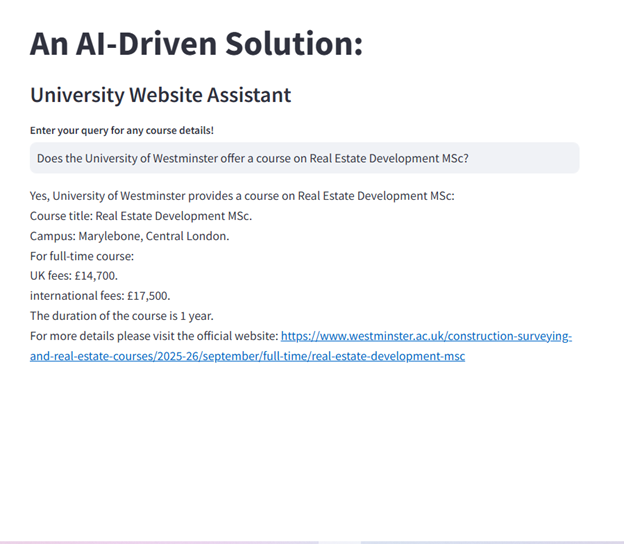 Figure 42: Prototype of user interface
Figure 42: Prototype of user interface
The developed prototype demonstrates integrating the RAG-Tuned Llama-3.2-3B model as an AI-driven solution for a university course assistant. The model was hosted locally using Ollama, leveraging its lightweight framework for deploying optimised LLMs in offline environments. To enhance the chatbot’s ability to provide accurate and context-specific information, LangChain was used to implement Retrieval-Augmented Generation (RAG). This combination allows the model to dynamically retrieve course data from a vectorised knowledge base stored in ChromaDB and generate precise responses. The user interface (UI) was built using Streamlit, enabling a simple, interactive, and accessible front-end where users can input queries related to university courses. For example, users can ask, “Does the University of Westminster offer a course on Real Estate Development MSc?” and receive detailed responses, including course title, campus location, fees, duration, and relevant hyperlinks to official course webpages. This UI ensures ease of use while maintaining an organised and structured presentation of data. Figure 41 showcases the prototype’s graphical interface, which displays the course information retrieved and generated by the system. Refer to Appendix 3 for detailed information on prototype code.
6.5.1. Proof of Concept
The success of this prototype establishes a strong foundation for scalability and adaptability across different universities. By uploading course-specific data for a particular institution, the same pipeline—comprising LangChain for RAG, ChromaDB for vector embeddings, and a fine-tuned Llama-3.2-3B model—can be replicated to create customized chatbots for other universities. The modular nature of this system ensures that the training process is streamlined, requiring minimal time and computational resources to deploy a fully functional course assistant chatbot. This proof of concept demonstrates the system’s potential to revolutionize how educational institutions deliver course-related information, offering an automated, accurate, and dynamic solution tailored to user queries.
6.5.2. Limitations
Despite the success of the prototype, there are notable limitations that constrain its current capabilities. The system relies heavily on the quality and consistency of the dataset; any inaccuracies or gaps in the data can result in incorrect or incomplete responses. Scaling the solution to support multiple universities introduce challenges, as diverse data formats and structures require additional preprocessing and customization. The absence of real-time data integration limits the chatbot’s ability to adapt to dynamic updates in course information. Additionally, the prototype is restricted to handling English-language queries, which could be a barrier for non-English-speaking users. Computational resource requirements, particularly for running fine-tuned models and RAG pipelines locally, also limit the accessibility of the solution for institutions with limited technological infrastructure. Furthermore, ambiguous, or complex user queries may require further advancements in natural language understanding and fine-tuning to enhance accuracy and robustness. Addressing these limitations will be crucial for future iterations to ensure scalability, adaptability, and inclusivity.
Chapter 7: Conclusion
This project successfully developed an AI-powered chatbot to enhance the user experience for university websites by addressing course-related queries. The integration of advanced Large Language Models (LLMs), including Mistral 7B, Gemma 2-9B, Phi 3.5, and Llama 3.2, fine-tuned on a structured dataset, demonstrated significant improvements in response quality, accuracy, and efficiency. Retrieval-augmented generation (RAG) tuning further elevated the chatbot’s capabilities, enabling it to dynamically retrieve and integrate relevant information, ensuring precise and context-aware responses. The prototype, hosted locally using Ollama and implemented with LangChain for RAG, showcased the feasibility of deploying resource-efficient AI solutions. The user interface, developed with Streamlit, allowed seamless interaction, enabling users to query course details, such as program titles, durations, fees, and campus information. This proof of concept highlights a scalable solution where other universities can adopt the same methodology to provide real-time, accurate course-related information.
Evaluation metrics, including BLEU, CER, and METEOR, confirmed the chatbot’s strong performance, with the fine-tuned Llama 3.2 model achieving the best results across all metrics. Post-RAG integration, the chatbot demonstrated further improvements in generating reliable outputs, underscoring the utility of combining generative and retrieval-based techniques. The reduction of validation loss, as seen during the training phase, indicates the robustness and generalizability of the fine-tuned models.
In conclusion, this project addressed the limitations of traditional university websites by introducing an efficient, scalable, and AI-driven solution. The developed chatbot not only improves accessibility and user satisfaction but also lays the groundwork for future advancements in the educational sector. The demonstrated framework can be easily extended to other institutions, paving the way for intelligent, user-friendly systems that enhance the overall digital experience for students and stakeholders.
Chapter 8: Further Work
While the development and implementation of the AI-driven chatbot have demonstrated significant success in improving user experience for university websites, there remain several avenues for further enhancement and scalability. Future work can focus on refining the chatbot’s capabilities, expanding its functionalities, and ensuring adaptability across diverse educational platforms.
One of the key areas for improvement is the integration of multimodal capabilities. Currently, the chatbot handles text-based queries effectively; however, incorporating support for audio and image-based inputs can greatly expand its usability. For instance, voice-enabled interactions can cater to users with accessibility needs, while image recognition can allow students to upload course brochures or other materials to extract relevant information. Leveraging multimodal models such as CLIP or GPT-4 Vision can enable this advancement, making the chatbot more versatile and inclusive. Another potential direction is the inclusion of real-time data updates. Although the project successfully used Retrieval-Augmented Generation (RAG) to retrieve dynamic content, integrating real-time scraping and API connectivity to university databases would ensure that the chatbot always provides up-to-date information. This can be achieved by automating the ingestion pipeline to periodically update the vector database, thereby improving the reliability of the responses as course details change over time.
Further optimization of the fine-tuned Large Language Models (LLMs) is another crucial step. While models like Llama 3.2, Mistral 7B, Gemma 2-9B, and Phi 3.5 have shown promising performance, exploring the use of quantization techniques and lightweight models like GPT-4-tiny or DistilBERT can reduce the computational costs and memory requirements. This optimization will be particularly beneficial for deploying the chatbot on low-resource systems or mobile devices, thereby increasing accessibility. Additionally, extending the chatbot to support multilingual capabilities would enhance its usability for international students. By fine-tuning the model with multilingual datasets and incorporating translation APIs, the chatbot can respond to queries in multiple languages, thereby attracting a more diverse user base. This will align with global educational goals, catering to a wider audience seeking information about university programs. Incorporating advanced evaluation metrics and automated error detection systems can be explored to ensure further robustness and accuracy. The current evaluation relies on metrics such as BLEU, CER, and METEOR; however, integrating human-in-the-loop feedback mechanisms can continuously improve the model’s performance. Gathering user feedback and dynamically retraining the model on this data will enable continuous learning and adaptation to user preferences.
Finally, the framework can be expanded to include a multi-university support system. The proof of concept demonstrated that the chatbot could provide precise information for a single institution. Future iterations can enable other universities to upload their course-related data, allowing the chatbot to adapt to multiple datasets seamlessly. This will require scalable infrastructure, possibly leveraging cloud-based services for data hosting and model deployment.
Chapter 9: References:
Anupama Garla (2021). TF-IDF : A visual explainer and Python Implementation on Presidential Inauguration Speeches. [online] Medium. Available at: https://towardsdatascience.com/tf-idf-a-visual-explainer-and-python-implementation-on-presidential-inauguration-speeches-2a7671168550. [Accessed 14 Dec. 2024].
Artificial Intelligence Chatbots. JAMA Ophthalmology. Doi: https://doi.org/10.1001/jamaophthalmol.2023.3119.
Athaluri, S.A., Manthena, S.V., Kesapragada, V.S.R.K.M., Yarlagadda, V., Dave, T. and Duddumpudi, R.T.S. (2023). Exploring the Boundaries of Reality: Investigating the Phenomenon of Artificial Intelligence Hallucination in Scientific Writing Through ChatGPT References. Cureus, 15(4). Doi: https://doi.org/10.7759/cureus.37432.
Banerjee, S. and Lavie, A. (2005). METEOR: An Automatic Metric for MT Evaluation with Improved Correlation with Human Judgments. Proceedings of the ACL Workshop on Intrinsic and Extrinsic Evaluation Measures for Machine Translation and/or Summarization.
Bhartiya, N., Jangid, N., Jannu, S., Shukla, P. and Chapaneri, R. (2019). Artificial Neural Network Based University Chatbot System. [online] IEEE Xplore. Doi: https://doi.org/10.1109/IBSSC47189.2019.8973095.
Bii, P., 2013. Chatbot technology: A possible means of unlocking student potential to learn how to learn. Educational Research, 4, pp. 218-221.
Braddom, S., Campbell, C., Reed, S. and Floersheim, R. (2020). Course Websites: Are You Giving Your Students What They Want? pp.8.332.1–8.332.10. Doi: https://doi.org/10.18260/1-2–11695.
Celikyilmaz, A., Clark, E. and Gao, J. (2020). Evaluation of Text Generation: A Survey. arXiv preprint arXiv:2006.14799.
Eysenbach, G. (2023). The Role of ChatGPT, Generative Language Models and Artificial Intelligence in Medical Education: A Conversation with ChatGPT - and a Call for Papers (Preprint). JMIR Medical Education, 9. Doi: https://doi.org/10.2196/46885.
Gatzioufa, P. and Saprikis, V. (2022). A literature review on users’ behavioral intention toward chatbots’ adoption. Applied Computing and Informatics. Doi: https://doi.org/10.1108/aci-01-2022-0021.
GitHub. (n.d.). nlp_fundamentals/1_nlp_basics_tokenization_segmentation.ipynb at master · dair-ai/nlp_fundamentals. [online] Available at: https://github.com/dair-ai/nlp_fundamentals/blob/master/1_nlp_basics_tokenization_segmentation.ipynb.
Goodfellow, I., Bengio, Y., & Courville, A. (2016). Deep Learning. Cambridge, MA: MIT Press.
Gordon, J. and Berhow, S. (2009). University websites and dialogic features for building relationships with potential students. Public Relations Review, 35(2), pp.150–152. Doi: https://doi.org/10.1016/j.pubrev.2008.11.003.
He, H., Liu, K., & Wang, J. (2022). “Parameter-Efficient Fine-Tuning for Large-Scale Pretrained Language Models”. Journal of Machine Learning Research, 23(7), pp. 1–28.
Hu, E. J., Shen, Y., Wallis, P., Allen-Zhu, Z., Li, Y., Wang, L., Wang, L., & Rajbhandari, S. (2021). LoRA: Low-Rank Adaptation of Large Language Models. arXiv preprint arXiv:2106.09685.
Hua, H.-U., Abdul-Hadi Kaakour, Aleksandra Rachitskaya, Srivastava, S.K., Sharma, S. and Mammo, D.A. (2023). Evaluation and Comparison of Ophthalmic Scientific Abstracts and References by Current Hwang, G.-J. and Chang, C.-Y. (2021). A review of opportunities and challenges of chatbots in education. Interactive Learning Environments, 31(7), pp.1–14. Doi: https://doi.org/10.1080/10494820.2021.1952615.
I, M., Saxena, S., Prasad, S., Sai, P.M.V., Shankar, A., V, V., Vaddina, V. and Gopalakrishnan, S. (2023). Minimizing Factual Inconsistency and Hallucination in Large Language Models. arXiv (Cornell University). Doi: https://doi.org/10.48550/arxiv.2311.13878.
Idrees, H. (2024). RNN vs. LSTM vs. GRU: A Comprehensive Guide to Sequential Data Modeling. [online] Medium. Available at: https://medium.com/@hassaanidrees7/rnn-vs-lstm-vs-gru-a-comprehensive-guide-to-sequential-data-modeling-03aab16647bb.
Ilieva, G., Yankova, T., Klisarova-Belcheva, S., Dimitrov, A., Bratkov, M. and Angelov, D. (2023). Effects of Generative Chatbots in Higher Education. Information, [online] 14(9), p.492. Doi: https://doi.org/10.3390/info14090492.
Information Systems and Informatics, 3(4), pp.615–633. Doi: https://doi.org/10.51519/journalisi.v3i4.204.
Kaushal, V. and Yadav, R. (2022). The Role of Chatbots in Academic Libraries: An Experience-based Perspective. Journal of the Australian Library and Information Association, 71(3), pp.215–232. Doi: https://doi.org/10.1080/24750158.2022.2106403.
Klímová, B. and Ibna Seraj, P.M. (2023). The use of chatbots in university EFL settings: Research trends and pedagogical implications. Frontiers in Psychology, 14. Doi: https://doi.org/10.3389/fpsyg.2023.1131506.
LangChain. (2023). Documentation. Available at: https://www.langchain.com.
Lewis, M., Riedel, S., & Schwenk, H. (2023). “Fine-Tuning Large Language Models for Task-Specific Adaptation”. Proceedings of Machine Learning Research, 37(5), pp. 45–67.
Lewis, P., Oguz, B., Rinott, R., Riedel, S., & Schwenk, H. (2020). Retrieval-Augmented Generation for Knowledge-Intensive NLP Tasks. arXiv preprint arXiv:2005.11401.
Lin, Z. (2023). Why and how can you embrace AI such as ChatGPT in your academic life? Royal Society Open Science, [online] 10(8), p.230658. Doi: https://doi.org/10.1098/rsos.230658.
Logunova, I. (2023). Word2Vec: Explanation and Examples. [online] Serokell Software Development Company. Available at: https://serokell.io/blog/word2vec.
Lund, B.D., Wang, T., Mannuru, N.R., Nie, B., Shimray, S. and Wang, Z. (2023). ChatGPT and a new academic reality: Artificial Intelligence‐written research papers and the ethics of the large language models in scholarly publishing. Journal of the Association for Information Science and Technology, 74(5). Doi: https://doi.org/10.1002/asi.24750.
Malik, R., Sharma, A., Trivedi, S. and Mishra, R. (2021). Adoption of Chatbots for Learning among University Students: Role of Perceived Convenience and Enhanced Performance. International Journal of Emerging Technologies in Learning (iJET), 16(18), p.200. Doi: https://doi.org/10.3991/ijet.v16i18.24315.
Mangotra, H., Dabas, V., Khetharpal, B., Verma, A., Singhal, S. and Mohapatra, A.K. (2024). University Auto Reply FAQ Chatbot Using NLP and Neural Networks. Artificial Intelligence and Applications, [online] 2(2), pp.140–148. Doi: https://doi.org/10.47852/bonviewAIA3202631.
Mardalena, O. and Andryani, R. (2021). Analisis Kualitas Layanan Website Pada Universitas Terbuka Palembang Menggunakan Metode Webqual 4.0 Dan Importance Performance Analysis (IPA). Journal of Information Systems and Informatics, 3(4), pp.615–633. Doi: https://doi.org/10.51519/journalisi.v3i4.204.
Mikolov, T., Chen, K., Corrado, G., & Dean, J. (2013). “Efficient Estimation of Word Representations in Vector Space”. arXiv preprint arXiv:1301.3781.
Mohammed Muneerali Thottoli, Badria Hamed Alruqaishi and Arockiasamy Soosaimanickam (2024). Robo academic advisor: Can chatbots and artificial intelligence replace human interaction? Contemporary educational technology, 16(1), pp.ep485–ep485. Doi: https://doi.org/10.30935/cedtech/13948.
Mohd Rahim, N.I., A. Iahad, N., Yusof, A.F. and A. Al-Sharafi, M. (2022). AI-Based Chatbots Adoption Model for Higher-Education Institutions: A Hybrid PLS-SEM-Neural Network Modelling Approach. Sustainability, 14(19), p.12726. Doi: https://doi.org/10.3390/su141912726.
Mogaji, E., Amarachukwu Anyogu and Wayne, T. (2020). Minding the Gap: An Assessment of the Quality of Course Information Available on the Websites of African Universities. Springer eBooks, pp.277–314. Doi: https://doi.org/10.1007/978-3-030-39379-3_11.
Munoz, A., Li, X., Bahadir Pehlivan, Harris, F.C. and Sergiu Dascalu (2019). Comparison of University Course Search Interfaces. EPiC series in computing, 64, pp.1–10. Doi: https://doi.org/10.29007/f1sm.
Nachmias, R. and Segev, L. (2003). Students’ use of content in Web-supported academic courses. The Internet and Higher Education, 6(2), pp.145–157. Doi: https://doi.org/10.1016/s1096-7516(03)00021-6.
Noy, S. and Zhang, W. (2023). Experimental evidence on the productivity effects of generative artificial intelligence. Science, 381(6654), pp.187–192. Doi: https://doi.org/10.1126/science.adh2586.
Patil, S., 2020. Exploratory Data Analysis Shashankgoud Patil1, Nagaraja GS 2.
Ph. D, J.M. and Noble, J. (2024). Encoder-Decoder Model. [online] Ibm.com. Available at: https://www.ibm.com/think/topics/encoder-decoder-model.
Pérez, J.Q., Daradoumis, T. and Puig, J.M.M. (2020). Rediscovering the use of chatbots in education: A systematic literature review. Computer Applications in Engineering Education, 28(6). Doi: https://doi.org/10.1002/cae.22326.
Rajbhandari, S., Rasley, J., Ruwase, O., & He, Y. (2020). “Zero Redundancy Optimizer for Training Large Neural Networks”. arXiv preprint arXiv:2003.05696.
Rakesh, N., Ravi, N., Daivajna, O.N. and Ramesh, S. (2022). A Proposed Academic Chatbot System using NLP Techniques. [online] IEEE Xplore. Doi: https://doi.org/10.1109/ICOEI53556.2022.9777231.
Romero, M., María Soledad Ramírez-Montoya, Mariana Buenestado Fernández and Fernando Lara (2023). Use of ChatGPT at University as a Tool for Complex Thinking: Students’ Perceived Usefulness. Journal of New Approaches in Educational Research, 12(2), pp.323–323. Doi: https://doi.org/10.7821/naer.2023.7.1458.
Sekiya, T., Matsuda, Y. and Yamaguchi, K. (2019). Investigation on University Websites for Semi-automated Syllabus Crawling. Doi: https://doi.org/10.1109/fie43999.2019.9028479.
Tukey, J.W., 1977. Exploratory data analysis. Reading/Addison-Wesley.
Unsloth - Open source Fine-tuning for LLMs. (2024). Unsloth - Open source Fine-tuning for LLMs. [online] Available at: https://unsloth.ai/.
Vaswani, A., Shazeer, N., Parmar, N., Uszkoreit, J., Jones, L., Gomez, A.N., Kaiser, L. and Polosukhin, I. (2017). Attention Is All You Need. [online] arXiv.org. Doi: https://doi.org/10.48550/arXiv.1706.03762.
Wood, J. (2020). University Website Information Quality and Its Effect on Student Interest in Enrollment. The International Journal of Business & Management, 8(12). Doi: https://doi.org/10.24940/theijbm/2020/v8/i12/bm2012-047.
Wölfel, M., Shirzad, M.B., Reich, A. and Anderer, K. (2023). Knowledge-Based and Generative-AI-Driven Pedagogical Conversational Agents: A Comparative Study of Grice’s Cooperative Principles and Trust. Big Data and Cognitive Computing, [online] 8(1), p.2. Doi: https://doi.org/10.3390/bdcc8010002.
Zengin, B., Arikan, A. and Dogan, D. (2011). Opinions of English Major Students about Their Departments’ Websites. Contemporary Educational Technology, 2(4). Doi: https://doi.org/10.30935/cedtech/6060.
Zhao, J., He, Z., & Zhang, Y. (2021). “Embedding and Similarity Metrics for Semantic Search”. Journal of Information Retrieval, 18(4), pp. 65–78.
Chapter 10: Appendix
10.1. Appendix 1: Project Management
The project adhered to a structured and disciplined project management approach. The project was executed efficiently and aligned with academic standards by combining technical rigour with strategic planning.
10.1.1. Agile Methodology
Agile principles formed the foundation of the project management strategy, emphasising flexibility, iterative development, and frequent review cycles. The work plan was divided into defined tasks, as shown in Figure A1, each targeting specific milestones such as data collection, model training, and prototype development. Agile’s iterative nature ensured continuous improvement and the ability to adapt to challenges as they arose.
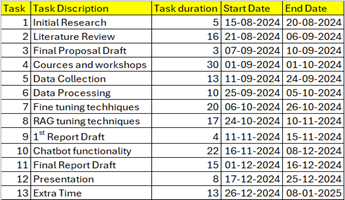
Figure A1: Project management using Agile Methodology
10.1.2. Gantt Chart
A detailed Gantt chart was employed to manage timelines and resources effectively. Key stages were clearly outlined, including data cleaning, fine-tuning, and testing, allowing for efficient progress tracking and adherence to deadlines. The visual representation provided by the Gantt chart shown in Figure A2 facilitated a holistic view of the project’s trajectory, ensuring that milestones were met promptly.
 Figure A2: Gantt Chart showing the project’s timeline and trajectory.
Figure A2: Gantt Chart showing the project’s timeline and trajectory.
10.1.3. Documentation and Reporting
Comprehensive documentation was maintained throughout the project, covering data preprocessing, model configuration, evaluation results, and testing outcomes. This meticulous record-keeping (Table AT2) ensured traceability and provided a robust foundation for the final dissertation report. Regular updates helped maintain alignment with academic expectations and project objectives.
10.2. Appendix 2: Risk Management
10.2.1. Data Limitations:
Risk: Incomplete or inconsistent data obtained through web scraping poses a significant challenge to the chatbot’s performance. Errors or omissions in the dataset can lead to inaccurate responses or an inability to answer specific queries, which may undermine user trust. Additionally, web scraping processes might encounter structural changes on the target website, further exacerbating data reliability issues over time. These limitations can compromise the robustness of the chatbot’s knowledge base.
Mitigation: To address these concerns, a robust data preprocessing pipeline will be implemented to clean, normalise, and validate the scraped data. Manual inspections will complement automated processes to identify and rectify anomalies in critical fields such as course titles, fees, and durations. Moreover, the dataset will be periodically updated to reflect the most recent information, mitigating risks associated with outdated data. Collaborative testing will be employed to verify dataset integrity before fine-tuning the model.
10.2.2. Resource Constraints
Risk: Limited computational resources constrain the scope and efficiency of fine-tuning, particularly for large models like Gemma-2-9B and LLaMA-3.2-3B. These models’ high computational and memory requirements may restrict scalability, especially in environments without access to high-performance hardware. This limitation can delay the training process and compromise model optimisation, hindering the project’s progress.
Mitigation: Parameter-efficient training techniques, such as LoRA, will be utilised to reduce resource demands while maintaining model performance. Selective fine-tuning on smaller, high-value datasets will further optimise resource utilisation. Cloud-based platforms with GPU access will be leveraged to augment local resources when needed. These strategies will ensure the model’s fine-tuning process remains efficient and aligned with resource availability.
10.2.2. Model Performance Variability
Risk: Fine-tuned models may exhibit variable performance, particularly when faced with complex or niche queries. Limited training data for specific scenarios can result in incomplete or irrelevant responses, diminishing user satisfaction. Inconsistent performance may also affect the model’s adaptability to new datasets, posing challenges for scalability across diverse institutions.
Mitigation: Regular iterative testing with diverse and edge-case queries will be conducted to identify and address performance gaps. User feedback loops will be integrated to capture real-world interactions, providing data for continuous improvement. The training dataset will also be expanded with examples covering a broader range of query types, ensuring that the model generalises effectively while addressing specific use cases.
10.2.3. Ethical Concerns
Risk: Ethical issues surrounding web scraping and AI use can create compliance and reputational risks for the project. Scraping data without proper authorisation may violate website policies while mishandling sensitive information can breach data privacy standards. Unethical AI usage, such as generating misleading responses, can erode user trust and lead to broader implications for institutional credibility.
Mitigation: Data will only be scraped from public and authorised sources, ensuring adherence to website terms and conditions. Ethical AI guidelines will be followed, emphasising transparency in decision-making processes and clear communication of model limitations. Data privacy standards will also be maintained by anonymising sensitive information and securing stored datasets, mitigating data misuse or breach risks.
10.2.4. Legal Concerns
Risk: Legal issues may arise from web scraping practices or AI-generated content. Breaching copyright laws, violating website terms of service, or failing to comply with data protection regulations such as GDPR could lead to fines or legal disputes.
Mitigation: All web scraping activities will strictly comply with the website’s terms of service, ensuring that only publicly accessible data is collected. Legal counsel or institutional guidance will be sought to align the project with relevant copyright and data protection laws. Moreover, AI-generated content will be clearly labelled to avoid misleading users or infringing intellectual property rights.
10.2.5. Social Concerns
Risk: The deployment of AI systems may face criticism related to potential response biases, lack of inclusivity, or job displacement fears. Misinterpreted or insensitive responses from the chatbot could also harm the institution’s reputation.
Mitigation: The dataset will be rigorously analysed for potential biases, and prompt engineering will be used to mitigate unintended outputs. The chatbot will include disclaimers to inform users of its limitations and provide contact options for unresolved queries. Additionally, the project will emphasize that the chatbot is intended as a supplementary tool to enhance human efforts, not replace them, to address concerns about job displacement.
10.2.6. Scalability and Adaptability
Risk: Expanding the chatbot to multiple universities with varying data formats and structures may present challenges in maintaining uniform performance. Differences in terminologies, course categorisations, and metadata can lead to data processing and retrieval inconsistencies. This variability may hinder the chatbot’s ability to respond accurately across institutions.
Mitigation: Modular preprocessing pipelines will be developed to accommodate diverse data structures, ensuring adaptability to new datasets. Dynamic prompt engineering will tailor the chatbot’s responses to institution-specific queries. Furthermore, the system will be designed to support multilingual capabilities, allowing the chatbot to cater to a global user base and enhance its scalability.
10.2.7. User Experience
Risk: Ambiguous or overly complex user queries can challenge the chatbot’s ability to provide accurate responses. These issues may result in unsatisfactory interactions, reducing user trust and engagement. Additionally, natural language understanding (NLU) limitations may restrict the chatbot’s ability to handle nuanced queries effectively.
Mitigation: Enhancements in natural language understanding through further fine-tuning and model upgrades will be implemented to improve response accuracy. Fallback mechanisms will be designed to provide guiding responses that help users refine their queries. Real-time monitoring of user interactions will be introduced to identify recurring challenges, enabling iterative improvements to the chatbot’s functionality.
10.3. Appendix 3: Dataset and Codebase
The dataset and codebase used in this project are publicly available on GitHub, ensuring transparency and reproducibility. The repository contains all relevant scripts, data processing workflows, model training configurations, and deployment files. Additionally, the repository includes a detailed ReadMe file, as shown in Figure A3, which provides instructions for setting up and running the code and a description of the dataset and its structure. To access the repository, visit https://github.com/Abhinav330/MSC-Project. The open availability of these resources allows other researchers and developers to replicate, validate, or extend the work conducted in this project. 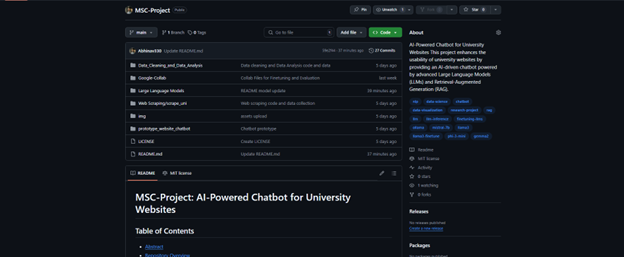 Figure A3: GitHub repository with detailed documentation(README.md File)
Figure A3: GitHub repository with detailed documentation(README.md File)